Chiang Mai: The Ultimate Travel Guide 2026
Chiang Mai has a way of making you forget about the rest of the world. You tell yourself you’re just passing through, maybe staying a few nights, and then—somehow—you’re still here a month later, sipping coffee in some quiet little café, half-wondering if you should just move in for good.
Short temple and market loops inside Chiang Mai are best outside school rush hours, when traffic is easier to manage. Marked bike bays near the moat make parking simpler, though they can fill quickly in the evening. A phone mount saves time when rerouting around sudden closures. For agile city travel with constant short stops, our scooter rental service provides the most practical solution.
It’s not a city that throws itself at you. No massive skyscrapers, no frantic energy like Bangkok. Instead, it’s slow mornings, golden temples, lazy afternoons, and night markets that feel like they stretch on forever. One minute you’re standing in front of a centuries-old stupa, the next you’re ordering an iced latte from a barista with a sleeve of tattoos. It’s old and new, traditional and modern, all wrapped up in a place that somehow makes it work.
I remember the first time I came to Chiang Mai—I thought I’d stay three days. By day two, I was already plotting how to extend my trip. By day five, I had a favorite noodle stall and a little fruit vendor who’d slip me extra mango slices just because I kept coming back.
That’s Chiang Mai. It’s the kind of place that doesn’t just give you things to do—it gives you room to breathe. It’s for wandering, for getting lost in side streets, for sitting by the river and doing absolutely nothing. And the funny thing? That’s exactly when you start to realize why people fall in love with it.
So, if you’re coming here, don’t rush. Give it time. Let it unfold. This guide will take you through the best of Chiang Mai—what to see, what to eat, and where to find those little moments that make you want to stay just a little bit longer.
Historical Context
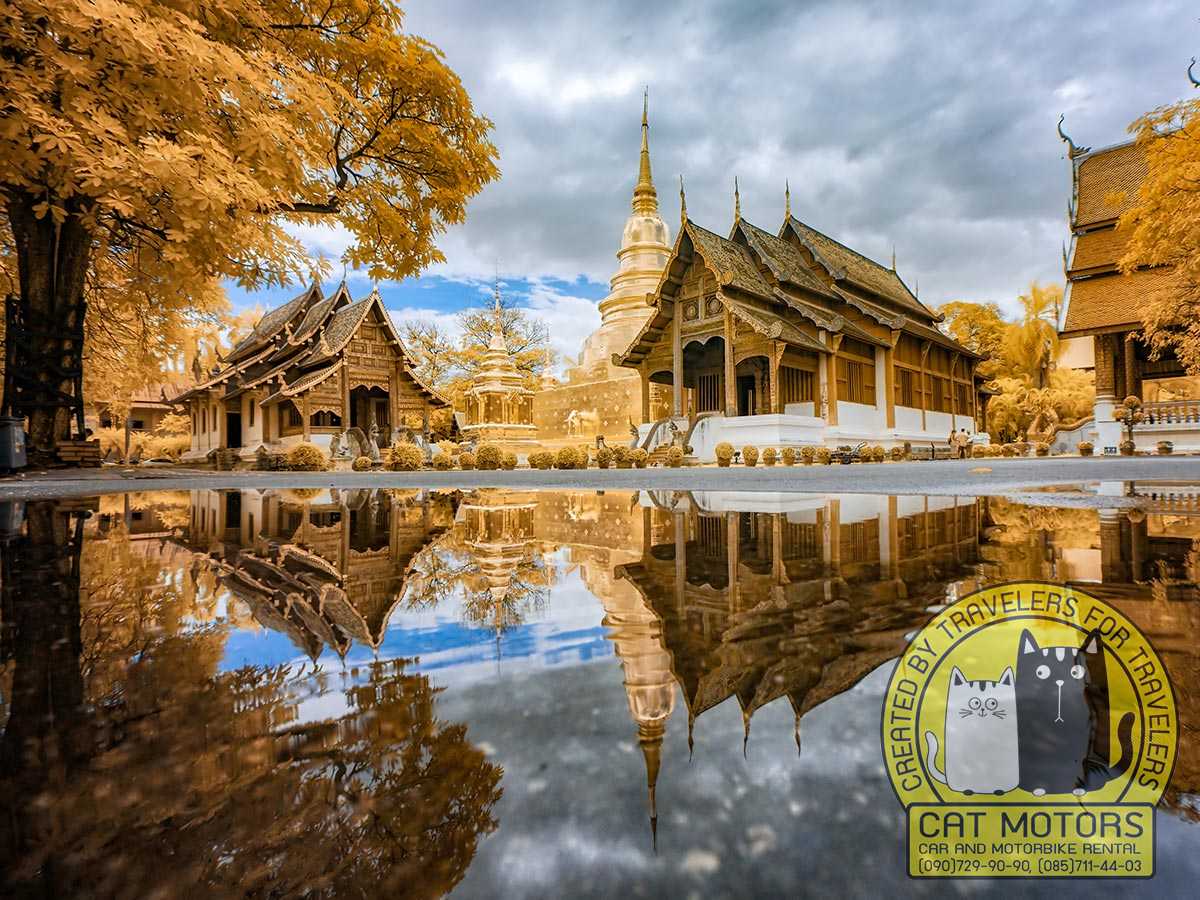
Stepping into Chiang Mai is like stepping into a living history book. The city was founded in 1296 by King Mangrai as the capital of the Lanna Kingdom (land of a million rice fields). Remnants of this rich history are everywhere – from the brick ruins of the old city walls and moat that once protected the realm, to the countless temples that have stood for centuries. Chiang Mai spent many years as a thriving center of Lanna culture, developing its own distinct language, art, and architecture. In the 16th century it fell under Burmese rule and the city’s fortunes ebbed, but the Lanna identity persisted. By the late 18th century, Chiang Mai joined the Kingdom of Siam (Thailand) and eventually blossomed again as an important cultural hub. Today, as you wander the Old City’s narrow lanes, you’re tracing the footsteps of kings, monks, and traders of old. The past and present coexist harmoniously here – modern coffee shops sit beside 700-year-old stupas, and monks check their smartphones beneath centuries-old banyan trees. This gentle layering of history gives Chiang Mai a timeless appeal and a deeply spiritual ambiance that’s palpable from the moment you arrive.
Main Attractions and Highlights
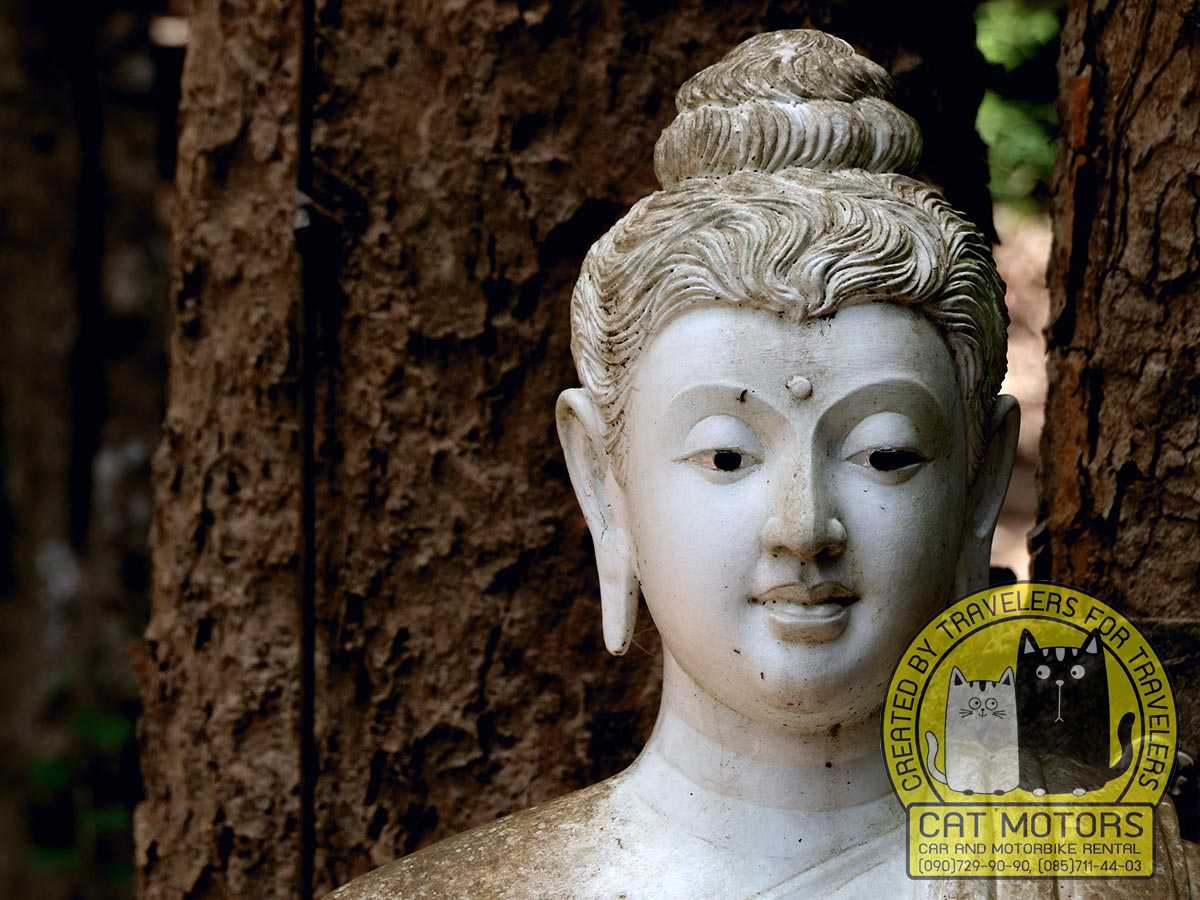
Chiang Mai is bursting with attractions, both in the city and throughout the surrounding province. Here are some must-see highlights that capture its essence:
- The Old City Temples: Inside Chiang Mai’s ancient walled center lies a treasure trove of temples (“wat” in Thai). There are more than 300 temples in and around the city – around 117 just within the Old City’s square mile! Each has its own story and beauty. Don’t miss Wat Chedi Luang, where a massive 15th-century brick stupa (partially collapsed from an earthquake) towers over the grounds. It once housed the Emerald Buddha and still exudes a raw, mysterious grandeur. Nearby, Wat Phra Singh dazzles with classic Lanna architecture and a revered Buddha image that locals flock to during festivals. Duck into Wat Phan Tao, a charming teakwood temple, or Wat Chiang Man, the oldest in town (built in 1296) with its stone elephant sculptures and crystal Buddha relic. As you temple-hop, remember to dress modestly and move slowly – part of the joy is soaking up the serene atmosphere and maybe hearing monks chanting in the distance.
- Wat Phra That Doi Suthep: Perhaps the most iconic symbol of Chiang Mai, Doi Suthep temple sits atop a mountain overlooking the city, about 15 km away. A winding road (or an adventurous hike) takes you up to this sacred spot, where you’ll climb 306 steps guarded by mosaic naga serpents to reach the golden pagoda. The climb is worth it – at the summit, the gilded stupa of Wat Doi Suthep gleams in the sunlight, surrounded by ornate shrines and panoramic views of the valley below. It’s breathtaking, especially at dawn or dusk when the city is bathed in soft light and the air is filled with the sound of temple bells. Local legend says the temple was built to house a miraculous Buddha relic carried by a white elephant that climbed the mountain and indicated the site. Whether or not you know the tale, you’ll feel the magic.
Insider tip: go early morning to witness monks praying with fewer tourists, or in the evening to catch a stunning sunset over Chiang Mai. It’s pure travel gold!
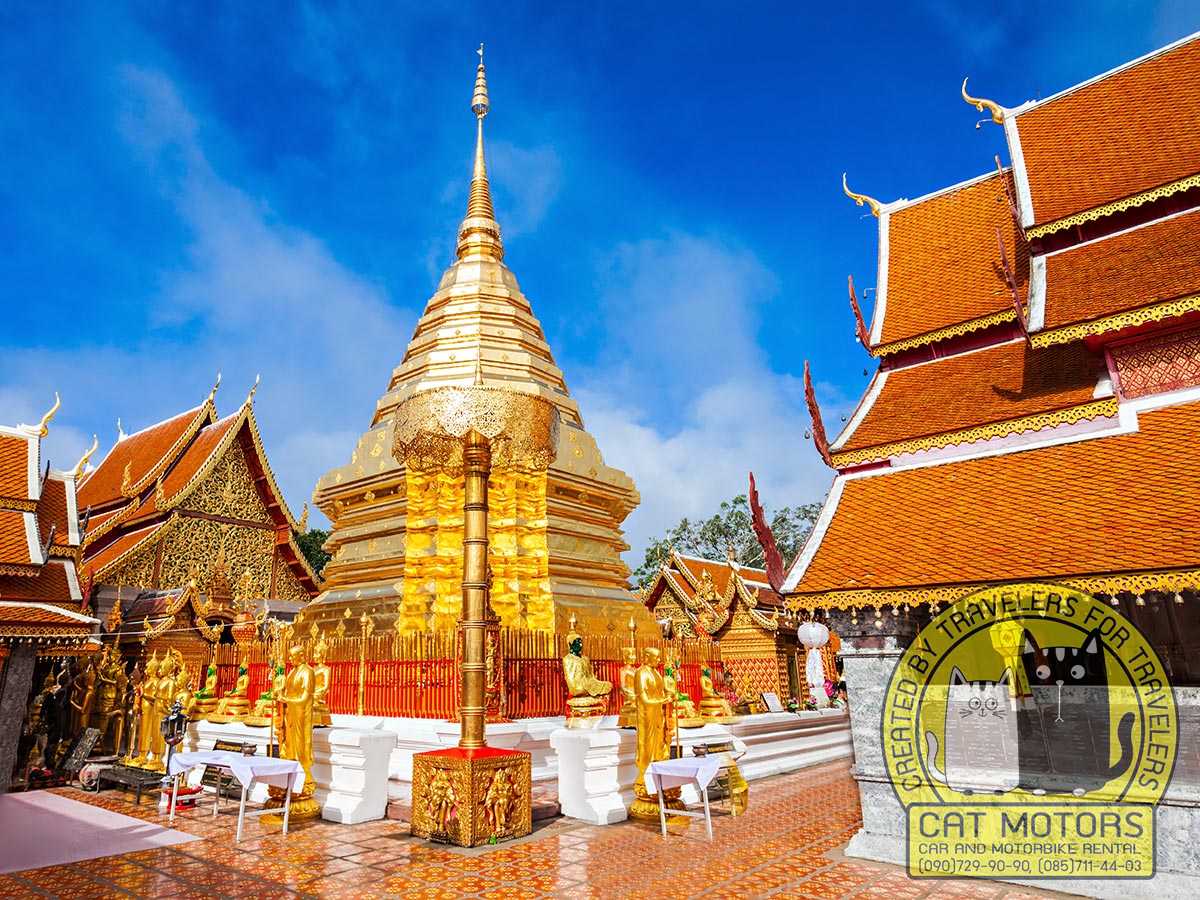
- Doi Inthanon National Park: Venture beyond the city to explore Chiang Mai’s natural wonders. Doi Inthanon, about two hours drive south, is Thailand’s highest peak at 2,565 meters – often called “the Roof of Thailand”. The national park around it is a playground of lush forests, waterfall trails, and viewpoints often misty with clouds. At the summit, you’ll find the air refreshingly cool (it can even frost in December!). Don’t miss the Twin Royal Pagodas near the top – two huge, jeweled structures built to honor the late King and Queen, surrounded by immaculate gardens. These pastel-colored pagodas sit amid swirling fog and flower gardens, looking like something out of a fairy tale. It’s a photographer’s dream. Whether you’re trekking to a waterfall like Wachirathan or Ang Ka Luang Nature Trail, or just enjoying the drive up, Doi Inthanon offers a refreshing escape into nature.
- Night Markets & Bazaars: When the sun sets, Chiang Mai truly comes alive. One of the city’s greatest pleasures is strolling its night markets, where you can shop, snack, and people-watch to your heart’s content. The famous Chiang Mai Night Bazaar on Chang Khlan Road runs every night and is a sprawling maze of stalls selling everything from carved soap flowers to elephant-print pants. It’s touristy but fun – you’ll find beautiful textiles, hill-tribe crafts, artwork, and antiques (real or reproduction). This market is particularly known for handicrafts like wood carvings, ceramics, and silver jewelry, all sold at bargain prices if you haggle. Even if you’re not buying, the experience is vibrant: neon lights, the sizzle of pad Thai at food stalls, musicians busking on the sidewalk.
- Sunday Walking Street (Tha Pae Walking Street): If you’re lucky enough to be in town on a Sunday, cancel other plans for the evening. The Sunday Night Market is unmissable. From around 4 PM till midnight, the main Ratchadamnoen Road in the Old City closes to traffic and transforms into a bustling pedestrian street market. Locals and tourists alike stroll the long stretch of vendors. Here you can shop for quality local products: think handmade soaps, colorful lanterns, paintings, clothes, and all kinds of quirky souvenirs. The food is incredible too – follow your nose to stalls selling spicy grilled sausages, mango sticky rice, fresh fruit smoothies, and more. Street performers (from traditional musicians to breakdancers) add to the festive vibe, and you’ll even find clusters of foot massage chairs where tired shoppers are getting cheap foot rubs right on the street. In fact, there are “lots of stalls that sell foods, clothes, handicrafts… Some street performers and foot massages are indispensable” at this market. It does get crowded, but that’s part of the fun. Just dive in and enjoy the sensory overload!
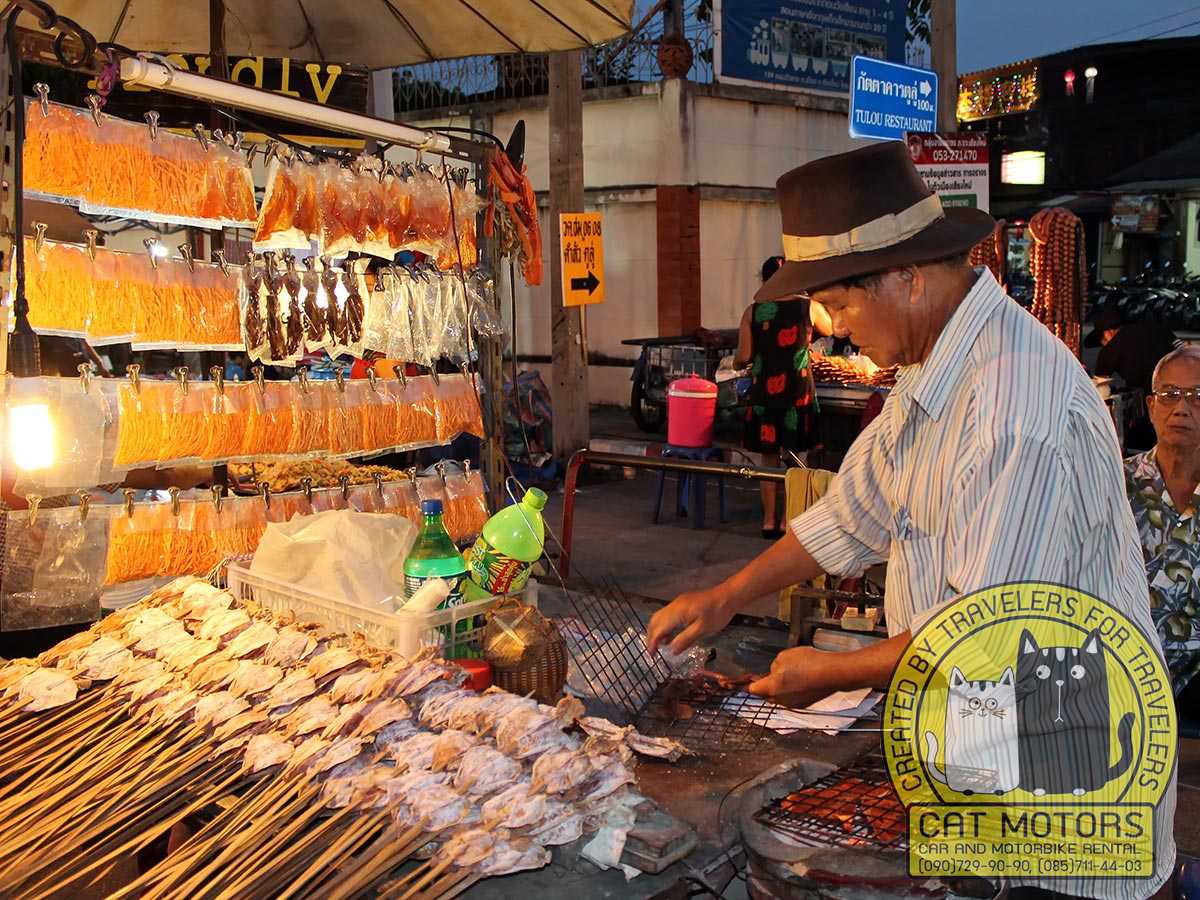
- Elephant Sanctuaries: Chiang Mai province is famous for its elephant camps – but nowadays the focus has shifted to ethical elephant sanctuaries where no riding is allowed and the emphasis is on care and conservation. The most renowned is Elephant Nature Park, about an hour north of the city. This rescue and rehabilitation center offers a beautiful experience: visitors can feed elephants baskets of fruit, walk beside them, and even bathe them in the river, all under staff guidance. Imagine standing knee-deep in a muddy river while a gentle giant splashes water and happily munches on bananas from your hand – it’s magical (and yes, a bit messy!). A day here is both fun and heartwarming, knowing your visit supports their care. As one description puts it, a visitor can bathe an elderly elephant while she contentedly munches on fruit from a basket in the calm river waters – truly a once-in-a-lifetime encounter. There are several other sanctuaries around Chiang Mai as well (like Elephant Jungle Sanctuary, etc.), so do your research to choose one with good welfare practices. Spending time with these gentle giants in a natural setting is often the highlight of a trip to Chiang Mai.
- Other Highlights: There are plenty more gems: Wat Phra That Doi Kham, a hillside temple with a giant Buddha that offers a panoramic view of the city (and far fewer tourists than Doi Suthep). The Queen Sirikit Botanical Garden and nearby Mon Chaem hill in Mae Rim, where flower fields and bamboo huts make for a charming day trip. Chiang Mai Zoo & Aquarium (popular with families) near the foot of Doi Suthep. And for those adventurous at heart, Chiang Dao Cave an hour or so north, where you can explore a deep limestone cave complex with a local lantern-bearing guide, then take in views of Chiang Dao mountain (Thailand’s third tallest peak) towering above rice fields. Whether cultural or natural, Chiang Mai’s attractions are deeply rewarding – don’t be surprised if you extend your stay to fit them all in!
Activities and Experiences
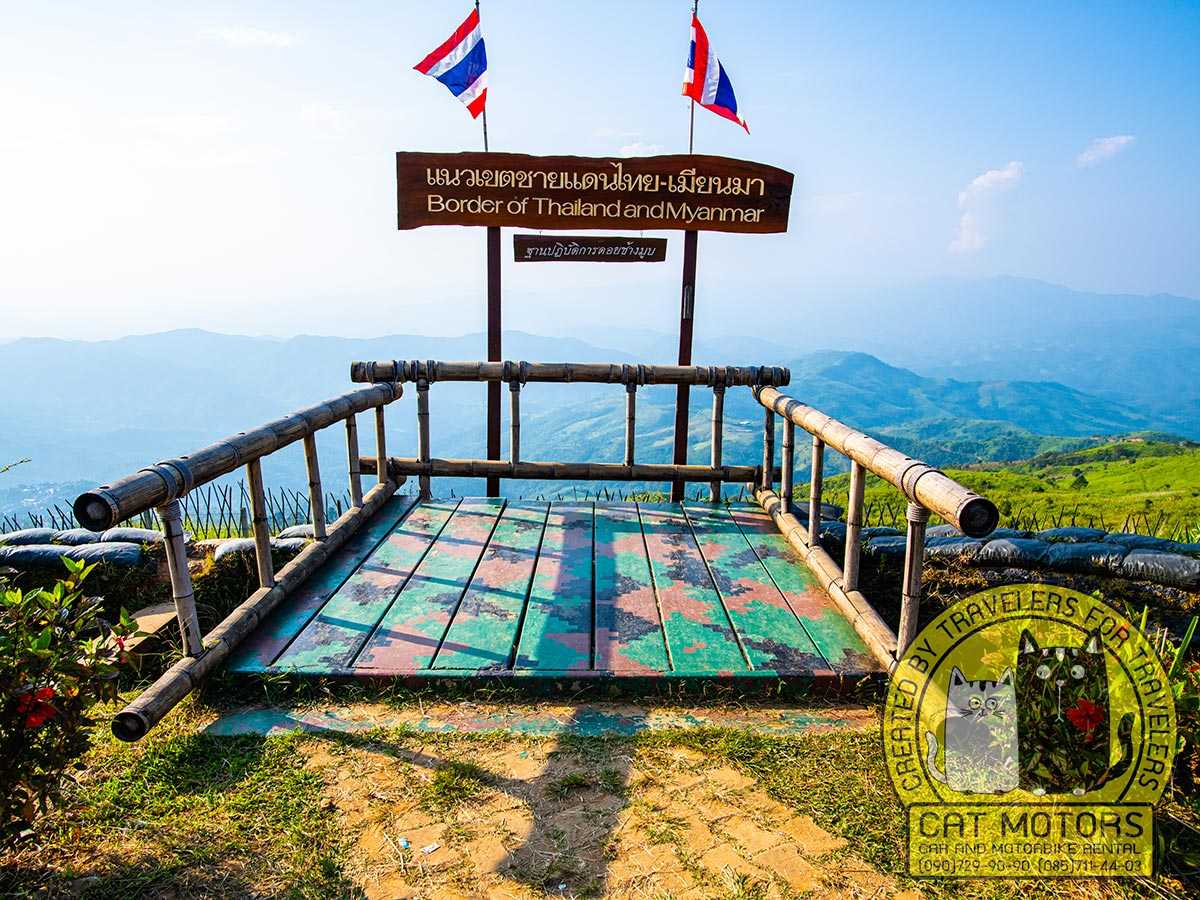
One thing’s for sure: you won’t be bored in Chiang Mai. Beyond sightseeing, the city offers immersive activities and experiences that connect you with its culture and landscape:
- Thai Cooking Classes: Chiang Mai is arguably Thailand’s cooking class capital. Many travelers rate this as a must-do, and for good reason. In a typical class, you’ll start by visiting a local market with your instructor to learn about Thai ingredients – vivid chili peppers, lemongrass, kaffir lime leaves, and plump eggplants. Then you’ll head to a farm or kitchen to cook classic dishes like Khao Soi, Pad Thai, green curry, or papaya salad. Under the patient guidance of a local chef, you grind curry paste, stir sizzling woks, and finally feast on your creations. It’s hands-on, fun, and absolutely delicious. Plus, you get to take home recipes as the ultimate souvenir. Chiang Mai’s cooking schools (e.g. Grandma’s Home Cooking, Thai Farm Cooking School, etc.) are famed for giving travelers a taste of authentic northern Thai cuisine. Don’t be surprised if this ends up being one of your favorite memories – it’s a wonderful way to engage with the local food culture beyond just eating (though you’ll do plenty of that too!).
- Temple Meditation & Monk Chats: Given Chiang Mai’s spiritual backdrop, consider spending time not just touring temples but experiencing them more deeply. Several temples offer meditation sessions or retreats for foreigners, ranging from a casual hour of guided meditation to multi-day silent retreats. Wat Suan Dok’s monk chat program, for example, lets you speak informally with young monks (who want to practice their English) – you can ask them about Buddhism, daily monastic life, or anything under the sun. It’s a unique cultural exchange and often enlightening (and free, though donations are welcome). Just grab a seat in the designated area and a friendly, orange-robed monk will join you for a chat. If meditation is your interest, places like Wat Umong or Wat Doi Suthep have structured programs; even if you’re new to it, learning from real monks in such serene settings is special. These experiences add a layer of mindfulness to your trip and are a nice way to slow down and reflect amid the travel buzz.
- Outdoor Adventures: Chiang Mai’s surrounding mountains and jungles are an adventure playground. Trekking is popular – you can join a guided trek ranging from easy half-day hikes to multi-day excursions that might include waterfalls, dense jungle trails, and visits to hill-tribe villages (home to communities like the Karen, Hmong, or Lahu). Waking up in a bamboo hut in a mountain village and sipping tea as the mist rolls through the valley is a pretty unforgettable experience. Make sure to go with a reputable guide who respects local communities. For adrenaline junkies, there’s zip-lining – the famous “Flight of the Gibbon” near Mae Kampong village sends you soaring through rainforest canopies on a series of ziplines and sky-bridges (safe and exhilarating!). If you prefer wheels, you can rent a bicycle and explore the countryside, or even do an ATV tour on muddy tracks outside town. Closer to the city, rock climbing at Crazy Horse Buttress is a draw for climbers (with courses available for beginners). And of course, a more gentle adventure: bamboo rafting or kayaking on the Mae Taeng or Ping River. Whether you’re jumping off a cliff into the Grand Canyon (a flooded quarry turned fun water park with inflatables and zip lines in Hang Dong district) or just hiking to a serene viewpoint, Chiang Mai caters to all levels of adventure.
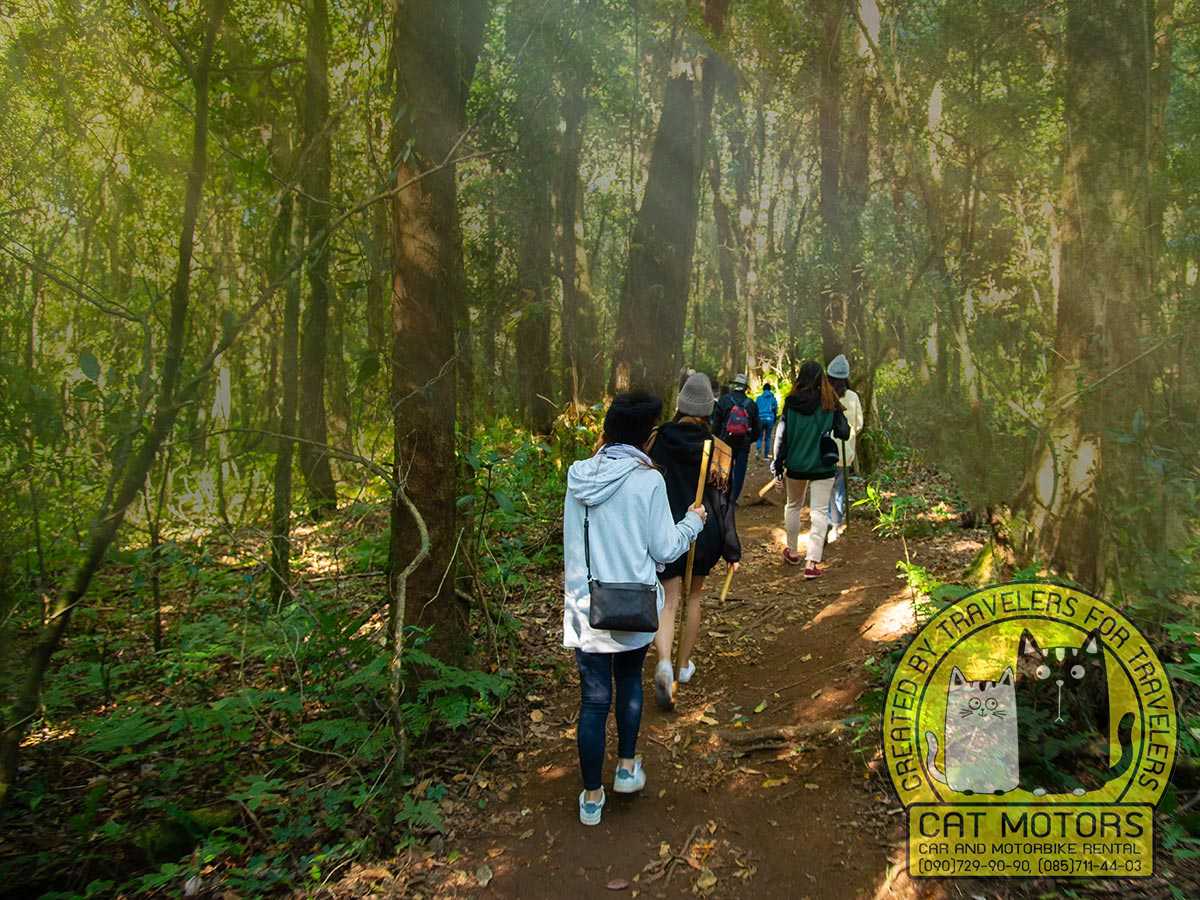
- Festivals & Cultural Events: Time your visit to coincide with one of Chiang Mai’s famous festivals, and you’re in for a treat. In November, the city becomes a scene from a dream during Yi Peng (the Lantern Festival) and Loi Krathong. Thousands of glowing paper lanterns are released into the sky, while small floats with candles and flowers are set adrift on the river – it’s an absolutely awe-inspiring sight to behold, with the night sky lit by lanterns carrying wishes (you may have seen those classic Chiang Mai lantern photos – that’s Yi Peng!). In April, Chiang Mai hosts Songkran, the Thai New Year, which here turns into the country’s biggest water fight. For three days (April 13-15), the whole city engages in friendly water battles – people of all ages throwing buckets of water or firing water guns at each other to wash away the old year’s bad luck. Chiang Mai is famous for doing Songkran to the fullest, thanks to the moat that provides an endless water supply. If you don’t mind getting absolutely soaked and partying in the streets, you’ll love it. Other cultural events include the Flower Festival in early February, where gorgeous floral floats parade and the city earns its “Rose of the North” nickname with blooms everywhere. These festivals add a joyous, colorful dimension to Chiang Mai life – truly bucket-list experiences that create lifelong memories (and fantastic photos!).
- Wellness and Workshops: Many travelers come to Chiang Mai to learn something new. The city has become a hub for wellness, arts, and crafts workshops. You can take a Thai massage course (from a single day introductory class to multi-week certifications) – imagine learning the ancient art of Thai massage in the place it originated, so you can impress friends back home. Speaking of massage, don’t forget to get a few while you’re here – an hour foot massage at the night market or a herbal spa treatment at an upscale spa will rejuvenate you (and costs a fraction of what you’d pay in the West). Yoga studios abound as well, offering everything from vinyasa flow to meditation retreats. On the crafty side, why not try a local artisan workshop? Spend an afternoon learning batik painting, pottery, or even muay thai (Thai kickboxing) if you fancy a very different sort of workout! Chiang Mai’s many expats and locals often offer classes in photography, painting, cooking (as mentioned), or language. Ever wanted to speak a bit of Thai or learn to write your name in elegant Thai script? Here’s your chance. These hands-on experiences ensure you don’t just see Chiang Mai, you live it and maybe pick up a new skill along the way.
Markets and Shopping
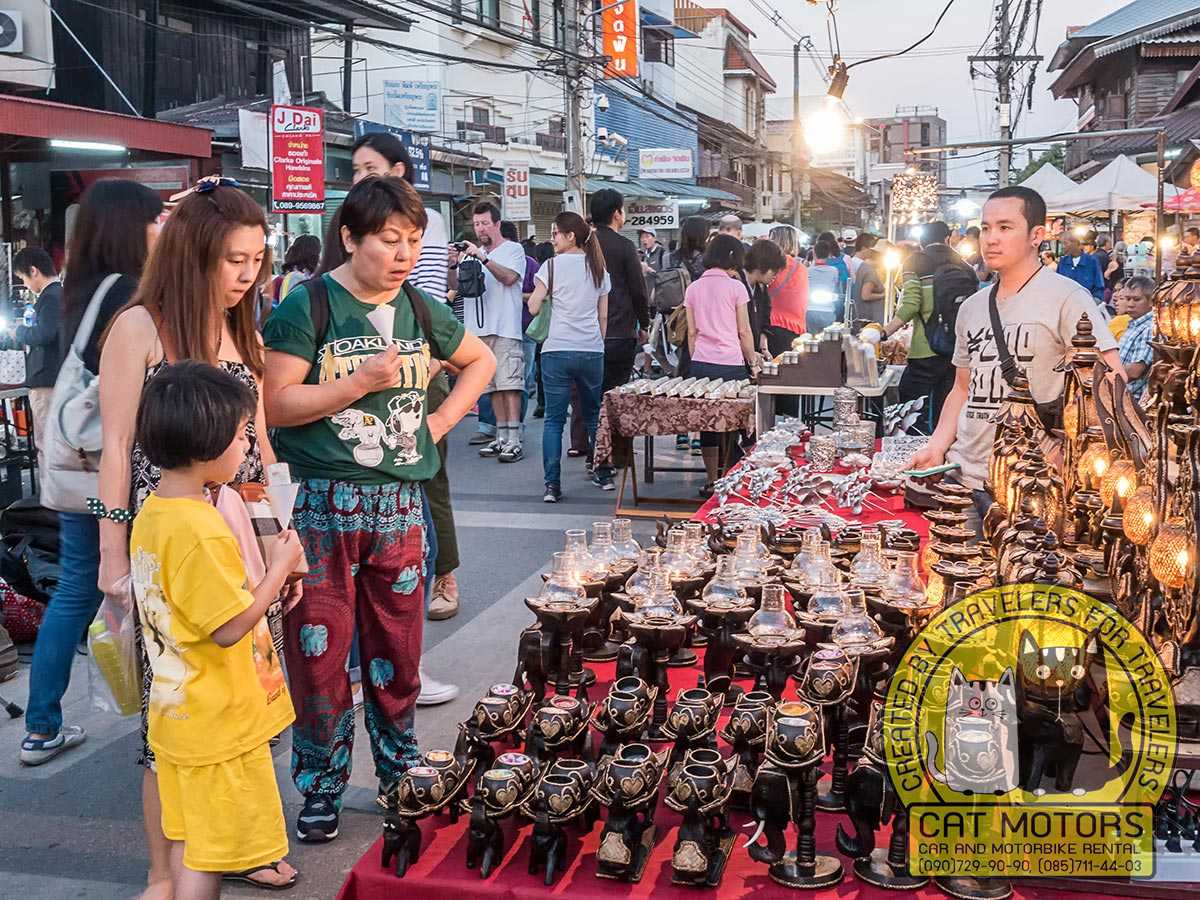
If you love markets, welcome to paradise. Chiang Mai’s markets are legendary – vibrant, chaotic, and brimming with local flavor. We’ve already touched on the Night Bazaar and the Sunday Walking Street, but let’s dive a bit deeper and mention a few more shopping hotspots:
- Warorot Market (Kad Luang): This is the place to go for a taste of local life. Warorot is a bustling daytime market near the Ping River, where locals shop for everything from fresh produce to cheap clothing. It’s housed in an old multi-level building and spills out into the surrounding streets. Wander here in the morning to see stall after stall of spices, dried fruits, herbs, tea, and Northern Thai specialties. The aromas of curry pastes and fried pork skin (a local snack) fill the air. On the second floor you’ll find textiles like hill-tribe fabrics, sarongs, and beautiful handmade souvenirs at local prices (don’t be shy to haggle a bit). Outside, vendors sell flowers (the nearby Ton Lamyai flower market is a rainbow of orchids and marigolds), and food carts offer bowls of noodle soup or crispy rotis. Warorot is chaotic, authentic, and a feast for the senses – it’s where you go to feel like a Chiang Mai local. Pick up some dried longan fruit or northern sausage to nibble on, and maybe a few packets of locally grown tea or coffee to take home. If you need a break, cross the street to the riverside Wat Ket area which has some charming cafés by the water.
- Saturday Night Market (Wua Lai Walking Street): On Saturday evenings, Chiang Mai offers a second helping of walking street fun, this time along Wua Lai Road (just south of the Old City gate Chiang Mai Gate). Wua Lai is traditionally the silver-working district, and by day you can visit silver workshops and the stunning Silver Temple (Wat Sri Suphan) with its intricately hand-hammered aluminum decoration. On Saturday night, the street fills with food stalls and craft vendors much like Sunday’s market but on a slightly smaller scale. Many locals actually prefer Saturday market because it’s a tad less crowded. Here you might find unique handicrafts, like silver jewelry made by the artisans of the neighborhood, carved soaps, leather goods, and cute accessories. Try some street food – perhaps sai ua (spicy herbal Chiang Mai sausage) hot off the grill, or kanom krok (coconut pancakes) made in cast iron pans. Don’t forget to look up at the street lamps: they are shaped like silver parasols, a nod to the area’s heritage. The atmosphere is friendly and buzzing, with local families, expats, and tourists mingling. If shopping’s not your thing, come for the food and live music – it’s like a street festival every weekend.
- One Nimman & Nimmanhaemin Road: For a totally different shopping scene, head to Nimmanhaemin (or “Nimman”) Road, Chiang Mai’s chic, modern district. This area, popular with young Thais and expats, is dotted with trendy boutiques, art galleries, and lifestyle markets. The shiny One Nimman complex is a stylish brick-laid plaza with craft shops, designer boutiques, and an upscale night market in the evenings. You can find indie Thai fashion labels, handmade ceramics, organic skincare products, and all sorts of artisanal goodies (at higher prices than the street markets, but often better quality or design). The whole Nimman area is great for boutique-hopping – think vintage clothing stores next to gadget shops and quirky art studios. It’s also cafe heaven, so you can caffeinate along the way. Even if you’re not buying, it’s fun to see the contemporary side of Chiang Mai’s shopping scene. And if you need a break in an air-conditioned space, MAYA Lifestyle Mall at one end of Nimman has many international brands, a cinema, and a rooftop food court with a view.
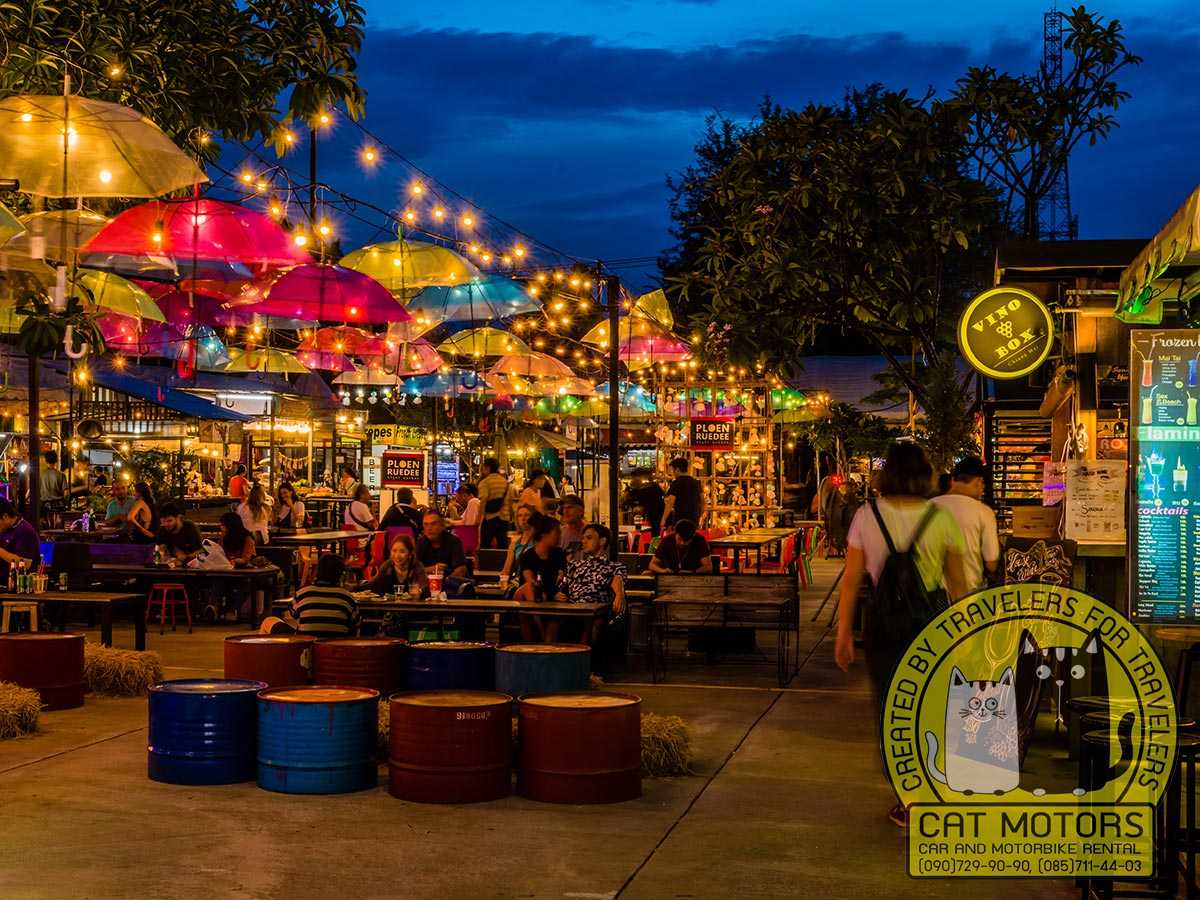
- Handicraft Villages: Chiang Mai province is famous for its traditional handicrafts, and you can actually visit the villages where many of these items are made. About 9 km east of the city is Bo Sang Umbrella Village, famed for its handmade Saa paper umbrellas. As you enter Bo Sang, you’ll notice the streets lined with brightly colored parasols. You can pop into workshops to watch artisans create these umbrellas from scratch – stretching cotton paper over bamboo frames and painting them with lovely floral motifs. (If you’re here in January, the Bo Sang Umbrella Festival turns the whole village into a sea of umbrellas with contests and displays! It’s a wonderful place to buy a few small parasols or painted fans as souvenirs. Along the same San Kamphaeng road, you’ll find other craft centers: silk weaving factories where the delicate process from silkworm to loom is demonstrated, silver workshops with detailed filigree jewelry and even large silver bowls being made, lacquerware ateliers with wooden bowls painted and glossed to perfection, and celadon pottery kilns producing jade-green ceramics. At each, you can watch the craftsmen at work and purchase pieces directly. Baan Tawai, a bit further south of town, is another famous village, known for wood carving and furniture – a treasure trove if you’re into ornate woodwork (they can ship larger items abroad). Bringing home a piece of Chiang Mai’s crafts is a lovely way to remember your trip – it supports local artisans and each piece has a story behind it.
Tips for Shoppers: In markets, bargaining is expected but keep it light and respectful. A friendly smile and a bit of Thai (“Lot dai mai?” – Can you discount?) goes a long way. Early evening is usually busiest at night markets, so if you prefer to browse with slightly thinner crowds, go right at opening or towards closing. Keep small bills handy for purchases and watch your belongings in crowded spaces (petty theft is uncommon but it’s wise anywhere). Finally, if you really love something, buy it – you might not easily find that exact item later, and the price will likely be fair. Few things beat the experience of chatting with the artist who made your souvenir, then taking it home as a piece of Chiang Mai’s heart.
Local Crafts and Culinary Experiences
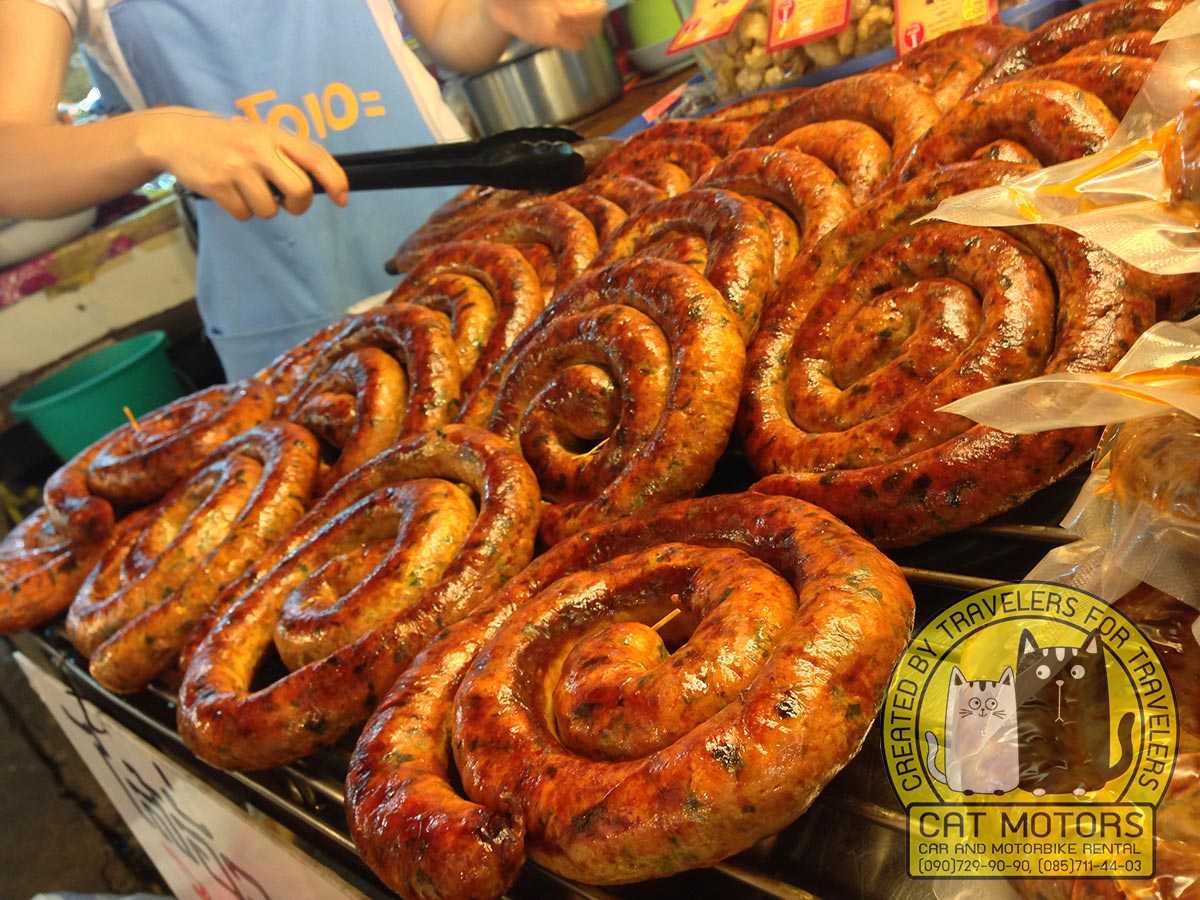
One of Chiang Mai’s greatest joys is its food and its craftsmanship – deeply rooted in tradition and bursting with creativity. To truly appreciate the city, you’ve got to taste it and see the artisans at work. Here’s how:
- Savor Northern Thai Cuisine: Chiang Mai is a food lover’s dream, especially if you’re eager to explore northern Thai flavors. The superstar dish you must try is Khao Soi – a rich, creamy curry noodle soup that is basically Chiang Mai in a bowl. Picture this: tender egg noodles and chicken (or beef) swimming in a spiced coconut curry broth, topped with crispy fried noodles for crunch, plus a side of pickled mustard greens, shallots, and lime to balance the richness. It’s heavenly – creamy, mildly spicy, a little tangy – and you’ll find it everywhere from street stalls to fancy restaurants. Other northern specialties to taste include Sai Ua, the local grilled sausage packed with lemongrass, chilies, and herbs – so flavorful it’ll make your taste buds dance. Try Nam Prik Ong or Nam Prik Noom, tasty chili dips (one tomato-based, one green chili-based) typically eaten with sticky rice or pork rinds. For a quick lunch, look for Hang Lay (Burmese-influenced pork belly curry) or Gaeng Om (herbal northern stew). And of course, don’t forget dessert: Mango Sticky Rice is a Thai classic available in Chiang Mai’s markets – perfectly ripe sweet mango with sticky glutinous rice drizzled in coconut milk and sugar. Or cool off with coconut ice cream served in a coconut shell with toppings like peanuts or sweet corn. Chiang Mai’s street food scene is safe and delicious; just follow the crowds to find what’s good.
- Best Eating Spots: For street food and local vibes, hit the Chiang Phueak Night Market (North Gate market) after dark. It’s a collection of food stalls near the North Gate of the Old City. The most famous vendor there is the “Cowboy Hat Lady” who serves braised pork leg over rice (Khao Kha Moo) – you’ll recognize her by her iconic cowboy hat and the long line of hungry customers. Trust me, the tender pork with fragrant gravy is worth the wait (and costs just a couple of dollars). Another must-visit for foodies is Warorot Market’s food section during daytime – grab some sai ua sausage, sticky rice, and maybe a bag of fried banana chips to snack on. If you prefer sitting and dining, Chiang Mai has everything from humble curry shops to trendy fusion restaurants. To experience the traditional Khantoke dinner, visit places like Old Chiang Mai Cultural Center – you’ll sit on floor cushions around a low table, sample a variety of northern dishes (curry, chili dips, fried chicken, sticky rice) served on a large tray called a khantoke, and watch classical dance and hill-tribe performances. It can be a bit touristy, but it’s an easy intro to northern food and art in one go. And vegetarians/vegans rejoice – Chiang Mai is very veg-friendly (partly due to many expats). You’ll find vegetarian versions of most Thai dishes, plus dedicated vegan restaurants (some even do khao soi vegan-style which is surprisingly good!).
- Coffee and Cafe Culture: Fun fact – northern Thailand grows excellent coffee, and Chiang Mai has developed a serious café scene. The cool mountain climate in areas like Chiang Dao and Mae Taeng is ideal for coffee plantations, and there’s a farm-to-cup movement here. Throughout the city, especially in Nimman and the Old Town, you’ll find hip cafés serving locally grown Arabica coffee that’s often roasted in-house. Each café has its own personality – from chic minimalist spots to ones filled with antique Lanna decor or even cat cafés (if you need some feline therapy with your latte). If you’re a coffee lover, take an afternoon to hop between a few cafés; try a cup of drip coffee or a creamy Thai iced coffee and maybe grab a slice of Thai tea cake or a croissant (yes, Chiang Mai does great bakeries too – blame the French expats!). These cafés are also wonderful for people-watching, digital nomad-spotting (you’ll see many on laptops), or just cooling off in the AC with a book when the afternoon gets hot.
- Local Craft Workshops: To truly appreciate Chiang Mai’s artistry, get hands-on with it. Many local craftsmen open their studios for workshops where you can learn their techniques. For example, try a umbrella painting workshop in Bo Sang – even if you’re not very artsy, it’s fun to paint colorful flowers or elephants on a mini paper umbrella under the guidance of a skilled artisan. You’ll walk away with your own painted umbrella as a souvenir (and a new appreciation for the patience it takes to make these!). At the San Kamphaeng Handicraft Center, you might join a Saa paper-making demo – see how mulberry bark is mashed into pulp and dried into paper, then make a sheet yourself. Some places offer jewelry-making classes, where you can create a simple silver ring or earrings. If you love textiles, look for batik or tie-dye workshops, or spend a day at a weaving center where you might even try using a loom to weave cotton. One unique experience is learning to carve a bar of soap into a flower – those intricate carved soaps you see at the market aren’t just for show, and some artisans will teach visitors this delicate craft. Participating in these activities is incredibly rewarding: not only do you learn a new skill (or at least have a laugh trying), but you also gain a deeper respect for Thailand’s rich craft heritage. Plus, the artisans are often wonderful people with stories to tell – it’s as much cultural exchange as it is class.
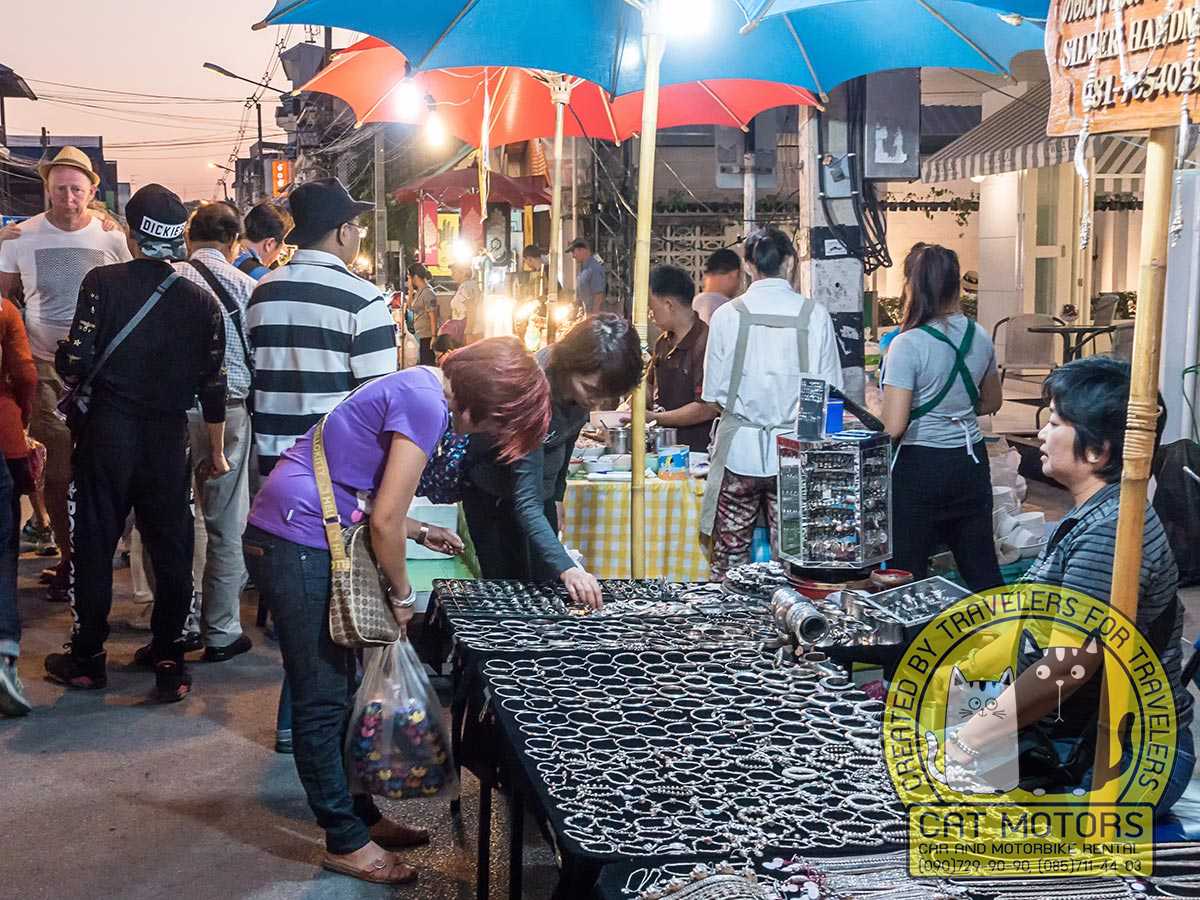
- Tea and Coffee Farm Visits: Outside the city, you can also visit tea plantations and coffee farms in the hills. Places like Araksa Tea Garden (in Mae Taeng district) welcome visitors for tours where you can pluck tea leaves, see the processing, and sip freshly brewed Assam tea amidst gorgeous green terraces. Similarly, some coffee villages up in Doi Chang or around Chiang Rai (a few hours away) offer homestays and tours where you learn how coffee is grown and processed. It’s a lovely way to spend a day, especially if you enjoy scenic drives and want to see rural life.
In short, Chiang Mai invites you to taste and create. Between all the eating and the crafting, you’ll not only satisfy your stomach but also your soul – and come away with deeper insight into what makes northern Thai culture so special.
Practical Information
Now that you’re excited about Chiang Mai, let’s get down to the practical details to make your trip smooth and enjoyable. This section covers how to get there, how to get around, where to stay, and other useful tips for a hassle-free adventure.
Getting to Chiang Mai
Despite its far-north location, Chiang Mai is very well connected. The quickest way is by air – Chiang Mai International Airport (CNX) has numerous daily flights from Bangkok (just about 1 hour duration) and direct flights from other Asian hubs like Singapore, Kuala Lumpur, Hong Kong, and Seoul. If you book in advance, flights can be quite cheap, and the convenience is unbeatable. For those with more time, the classic way from Bangkok is the overnight train. Trains (including a popular sleeper train) take about 11–15 hours to reach Chiang Mai. It’s a long ride but can be a memorable experience – you get to watch the landscape change from flat central plains to rolling green hills, and sleeping berths are reasonably comfortable (opt for a 2nd class A/C sleeper for good value). Many travelers love waking up in the morning to sunrise over northern Thailand just before arriving. Buses are another option: overnight VIP buses from Bangkok take roughly 9–10 hours, and daytime buses around 10–11 hours. They’re usually cheaper than trains or planes and have reclining seats and sometimes even snacks. There’s also a highway for those self-driving or taking a private car, but it’s a hefty drive (about 8-9 hours from Bangkok). If you’re coming from elsewhere in northern Thailand, Chiang Mai is a major transport hub with frequent bus and minivan links (e.g., 3-4 hours from Chiang Rai by bus, 6 hours from Sukhothai, etc.). However you come, the journey is worth it – as you approach Chiang Mai, you’ll notice the air getting cooler and the mountains drawing nearer.
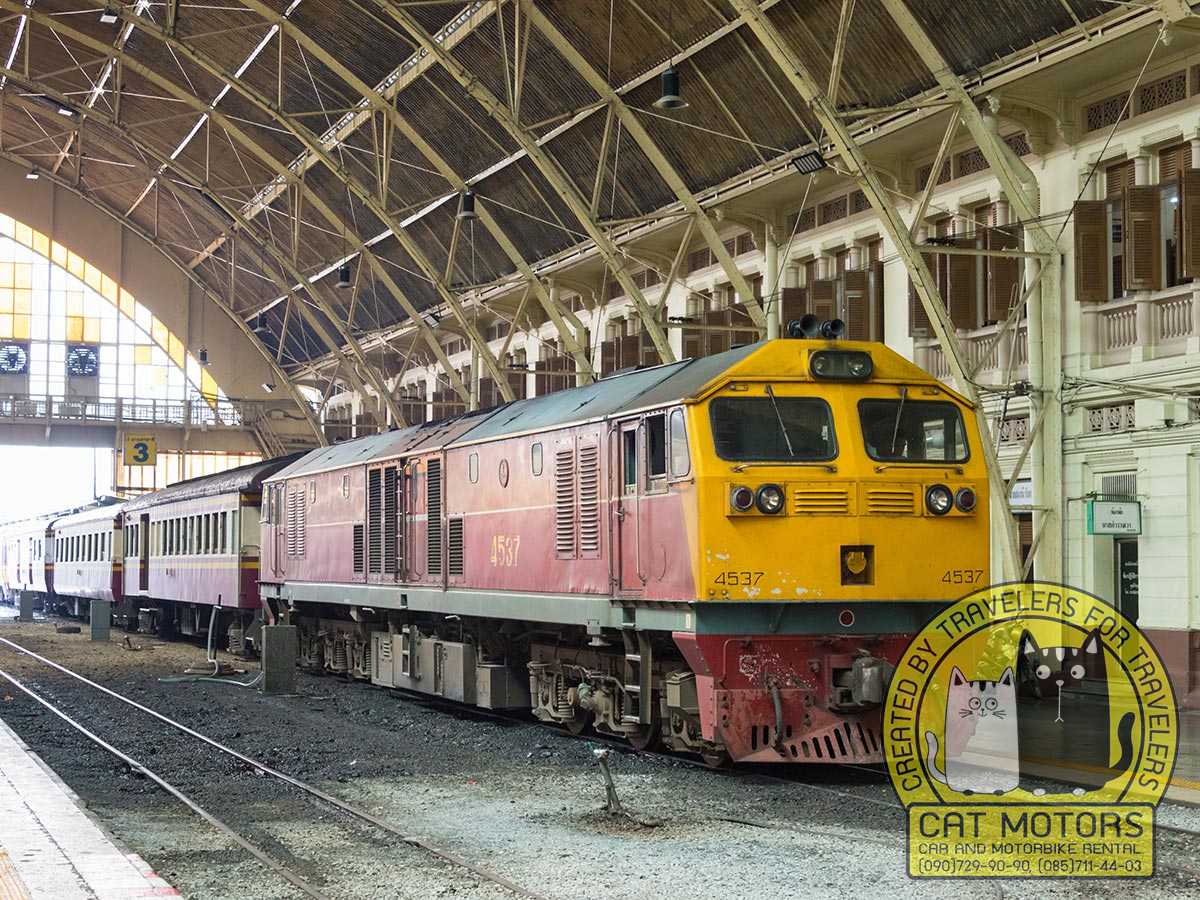
Getting Around Chiang Mai
Once you’re in town, getting around is relatively easy and part of the fun. Chiang Mai doesn’t have trains or a city bus system worth noting (there are some local bus routes and new air-conditioned vans on set routes, but many visitors don’t use them). Instead, you have tuk-tuks, songthaews, and your own two feet! In the compact Old City, walking or renting a bicycle is a great option to explore the temples and alleys at your own pace. When you need to go further or give your feet a rest, just hail a tuk-tuk – those three-wheeled motorized rickshaws – and negotiate a fare (short rides within town are usually 60–100 baht, longer ones a bit more; always agree on the price first). For an even more local experience, hop on a red songthaew. Songthaews are shared taxis that are essentially red pickup trucks with benches in the back (you’ll see them everywhere). They have no fixed route in the city – they go where passengers want. Just wave one down, tell the driver your destination, and if he’s heading that way, he’ll nod and you jump in the back with any other passengers. It’s typically a flat fare around town (often 30 THB per person for most city rides – incredibly cheap!). As a guideline, a short ride is about 20–30 baht, and within city it shouldn’t exceed 100 baht per person. It’s not the fastest mode (they might detour to drop others off), but it’s cheap and you get to feel like a local. If a driver is quoting you a high price, it might be that he wants to charter privately – you can always wave down another. For convenience, ride-hailing apps like Grab (Southeast Asia’s equivalent of Uber) are widely used in Chiang Mai. With Grab, you can summon a car or even a motorbike taxi, see the fare beforehand, and avoid haggling – very handy, especially at night or for trips to the airport. Grab fares can be slightly more than songthaews, but still very reasonable and drivers are usually professional and friendly.
If you plan to rent a scooter or motorbike, Chiang Mai is a place many travelers do so, given the scenic drives around. Rental costs about 250-300 baht per day for an automatic scooter. But a word of caution: Thai traffic can be chaotic and Chiang Mai’s roads, while calmer than Bangkok, still have unpredictable traffic and some reckless drivers.
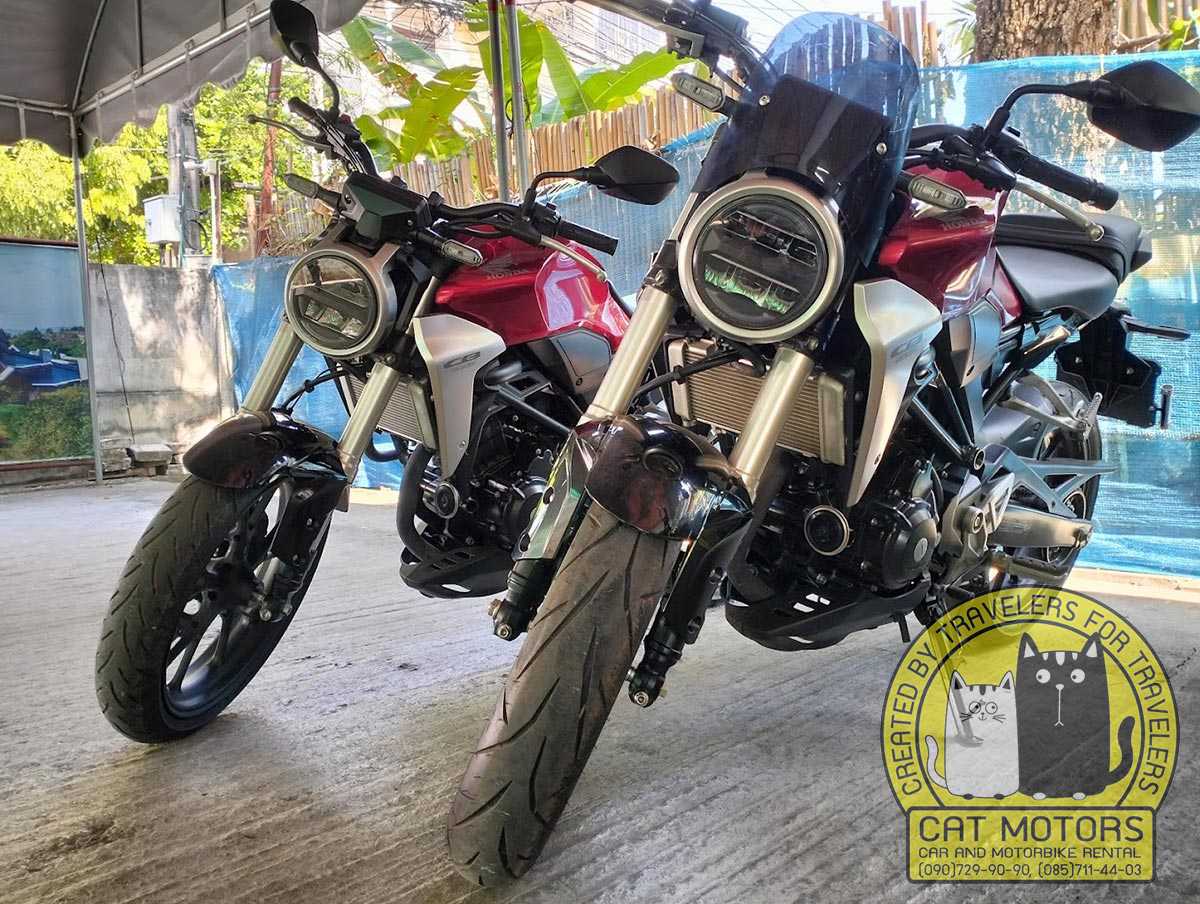
If you’re not very experienced on a motorbike, consider sticking to other transport or only riding on quieter outskirts roads. Always wear a helmet (required by law and for good reason), drive defensively, and carry an international driving permit. Police occasionally stop foreigners on bikes to check for licenses and helmets, and fines can apply if you don’t have them. For trips outside the city (like Doi Suthep, sticky waterfalls, etc.), you can either rent a vehicle, hire a songthaew/taxi for half or full day (negotiate a day rate), or join group tours that many agencies offer. Group tours are an easy way to reach farther sights like Doi Inthanon or Elephant sanctuaries if you’re not renting a car – just know they’ll often stop at some “shopping” spots along the way as part of the itinerary.
Where to Stay – Neighborhoods
Chiang Mai offers a range of areas to base yourself, each with its own vibe:
- Old City: Staying inside (or just around) the Old City walls is ideal for first-time visitors who want to be in the middle of history. You’ll have dozens of temples, restaurants, and cafes at your doorstep, and can walk to many attractions. The Old City is filled with charming guesthouses, hostels, and boutique hotels, often converted from traditional wooden homes or modern Thai houses in quiet lanes. It’s generally peaceful at night (apart from maybe some lively corners), and you get that atmospheric heritage feel. Anywhere near Tha Phae Gate or the Sunday Walking Street is prime location – convenient and full of life.
Pro tip: If visiting during a big festival like Songkran, staying in Old City means you’re right in the heart of festivities – fun but loud. If you prefer quiet during those times, maybe stay just outside the moat.
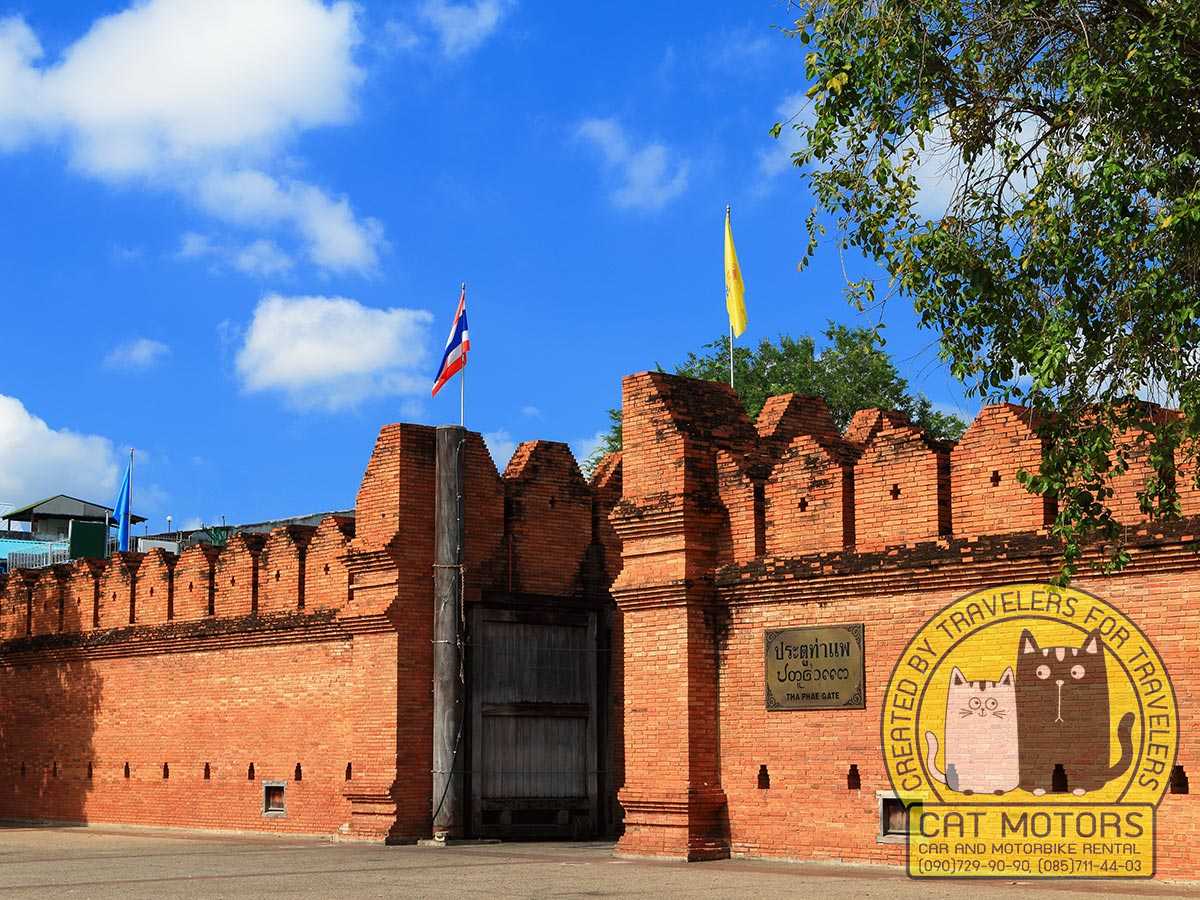
- Nimmanhaemin (Nimman) & Huay Kaew: This is the trendy part of town, about 10 minutes west of the Old City. Nimman is great if you enjoy cafes, nightlife, and a more cosmopolitan scene. Think Bangkok vibes on a smaller scale: rooftop bars, craft cocktail lounges, international restaurants, and shopping malls. Accommodation here ranges from hip design hotels to serviced apartments and some budget hotels too. It’s a favorite for digital nomads and younger travelers who want that urban convenience. The trade-off is you’re not surrounded by temples – instead, you’ll have easy access to coffee roasters and maybe co-working spaces. Nimman is a short tuk-tuk or Grab ride from the Old City when you want to go sightseeing. As one travel site put it, Nimman is perfect if you want to be near nightlife and entertainment, yet a quick ride from the cultural sights. The area around Maya Mall and along Huay Kaew Road (leading towards Doi Suthep Zoo and University) also has good hotels and is a bit more local since Chiang Mai University is nearby, giving it a college-town feel with cheap eats and live music bars.
- Riverside: East of the Old City along the Ping River, you’ll find a more relaxed, upscale ambience. The Riverside area (around Charoenrat Road and near Warorot Market) boasts several high-end hotels and resorts, including some beautiful ones set in tropical gardens by the water. If you’re looking for a romantic stay or a resort vibe where you can escape the city buzz, this is a great choice. You can have breakfast overlooking the calm river and take evening strolls on the riverside promenades. There are also a few great restaurants and jazz bars along the river. It’s a short ride into the city center from here, and some hotels offer shuttle services. Even if you don’t stay here, consider an evening river cruise dinner or a visit to the famous Riverside Bar & Restaurant or Good View for dinner with live music by the water.
- Night Bazaar/Chang Khlan: The area around the Night Bazaar (east of the Old City) is another popular place to stay, especially for families or those who love shopping. There are many mid-range hotels and some larger luxury hotels here. It’s very convenient for the Night Bazaar (obviously) and also walking distance to the Pantip Plaza (electronics mall) and Anusarn Market (night food court and bazaar). The vibe is lively in the evenings but generally a bit commercial. It lacks the distinct character of Old City or Nimman, but many people enjoy the convenience. You’ll also find some tour offices and massage shops aplenty here.
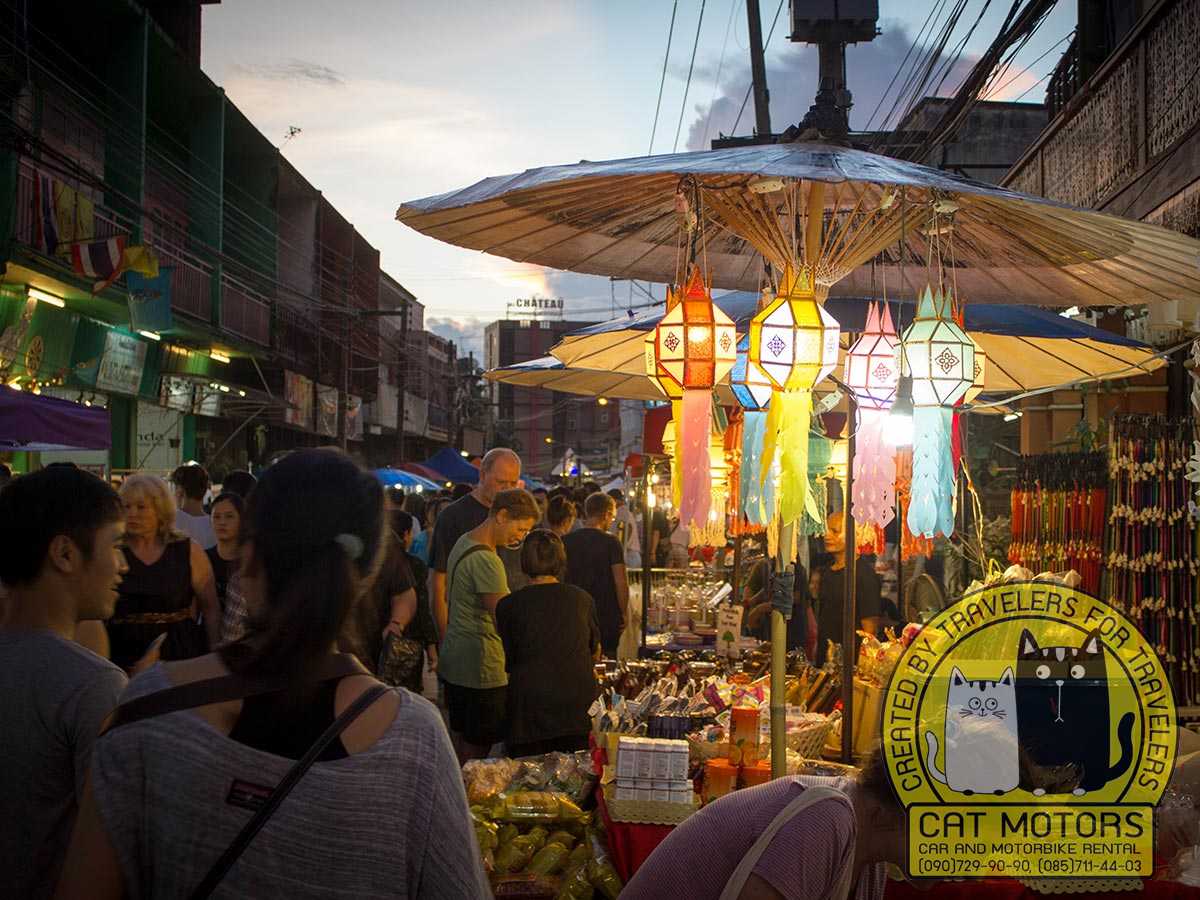
- Outside the city: If you’re craving nature, there are lovely resorts and homestays on the outskirts of Chiang Mai – from yoga retreats in Mae Rim to eco-lodges in the hills. These can be wonderful if you have longer or if you’re on a return trip seeking a slower pace. Think along the lines of bungalow resorts in rice fields or hillside cottages in Mae Kampong village. Just remember you’ll be farther from city conveniences.
Safety and Health
Chiang Mai is generally a safe city for travelers. Violent crime is extremely rare. You can walk around at night in most areas with normal precautions. Petty theft like pickpocketing or bag snatching is uncommon but can happen in crowded markets or during festivals (when everyone’s distracted), so keep your valuables secure just in case. Traffic, however, is the bigger concern – crossing busy roads requires caution (use pedestrian crossings near traffic lights when you can, though zebra crossings without lights are often ignored by drivers). If you rent a scooter, drive very carefully. Also, be aware of the air quality if you visit between February and April. Northern Thailand’s “Burning Season” (roughly Feb through early April) sees farmers burning crop stubble, which along with forest fires can create a thick haze over Chiang Mai. In March especially, air pollution can be bad enough that the mountains disappear behind smog. It’s not ideal for trekking or people with respiratory issues. Many expats actually leave during this period. The best seasons to visit are November to February (cool and dry, with December–Jan having delightfully cool mornings/evenings ~15°C/59°F and warm days). May to October is the rainy season – the city is lush and green, and rains are usually short afternoon showers, but it can be humid and some outdoor activities might be muddy. An advantage of rainy season: fewer tourists and everything is cheaper, plus the waterfalls are fuller.
When it comes to health, Chiang Mai has good medical facilities (two major private hospitals favored by expats: Bangkok Hospital Chiang Mai and Chiang Mai Ram, plus several clinics). Pharmacies are common for minor ailments (pharmacists often speak some English). No special vaccines are required for Chiang Mai beyond routine travel vaccines, but do protect against mosquitoes as dengue fever exists (use repellent, especially in evenings or in jungle areas). Tap water isn’t potable – use bottled water or refill at water machines. It’s hot much of the year, so stay hydrated.
Money and Costs
The local currency is Thai Baht (THB). Chiang Mai is quite affordable compared to Western cities or even Bangkok. You can eat a tasty street food meal for under $2, or have a nice dinner in a restaurant for $5–10. Accommodation ranges widely, but a clean guesthouse room might be $15–20, mid-range hotels $30–60, and luxury resorts still often under $150 a night. ATMs are everywhere (they charge a fee per withdrawal for foreign cards, usually ~220 THB, so withdraw larger amounts to minimize fees). Credit cards are accepted at big hotels, malls, and some restaurants, but cash is king at markets and small businesses. Carry small bills for songthaews and street food.
Respectful Travel
A few quick points – dress modestly when visiting temples (covered shoulders, no short shorts – carry a light scarf or sarong in your day bag to wrap if needed). Remove your shoes before entering any temple building (you’ll see piles of shoes at the entrance). Also remove shoes when entering someone’s home and even some shops – if you see shoes at the door, do the same. Public displays of affection are not common in Thai culture, so keep it low-key out of respect. On the flip side, you’ll see ladyboy cabaret shows and a generally tolerant attitude towards LGBTQ travelers – Chiang Mai is pretty open-minded and very welcoming to all. One more thing: toilets – many public toilets are the squat type and may not have toilet paper (Thai people often use water to clean), so it’s wise to carry tissues. But in tourist areas you’ll also find plenty of Western-style toilets. Dispose of toilet paper in bins if instructed, as plumbing is sensitive. It’s these little things that, once you know, make travel easier!
In summary, Chiang Mai is easy to navigate and well-suited to independent travelers. You’ll quickly find that things here move at a pleasant pace. With a bit of planning (and maybe a motorcycle helmet), you’re set for an amazing time.
Local Tips
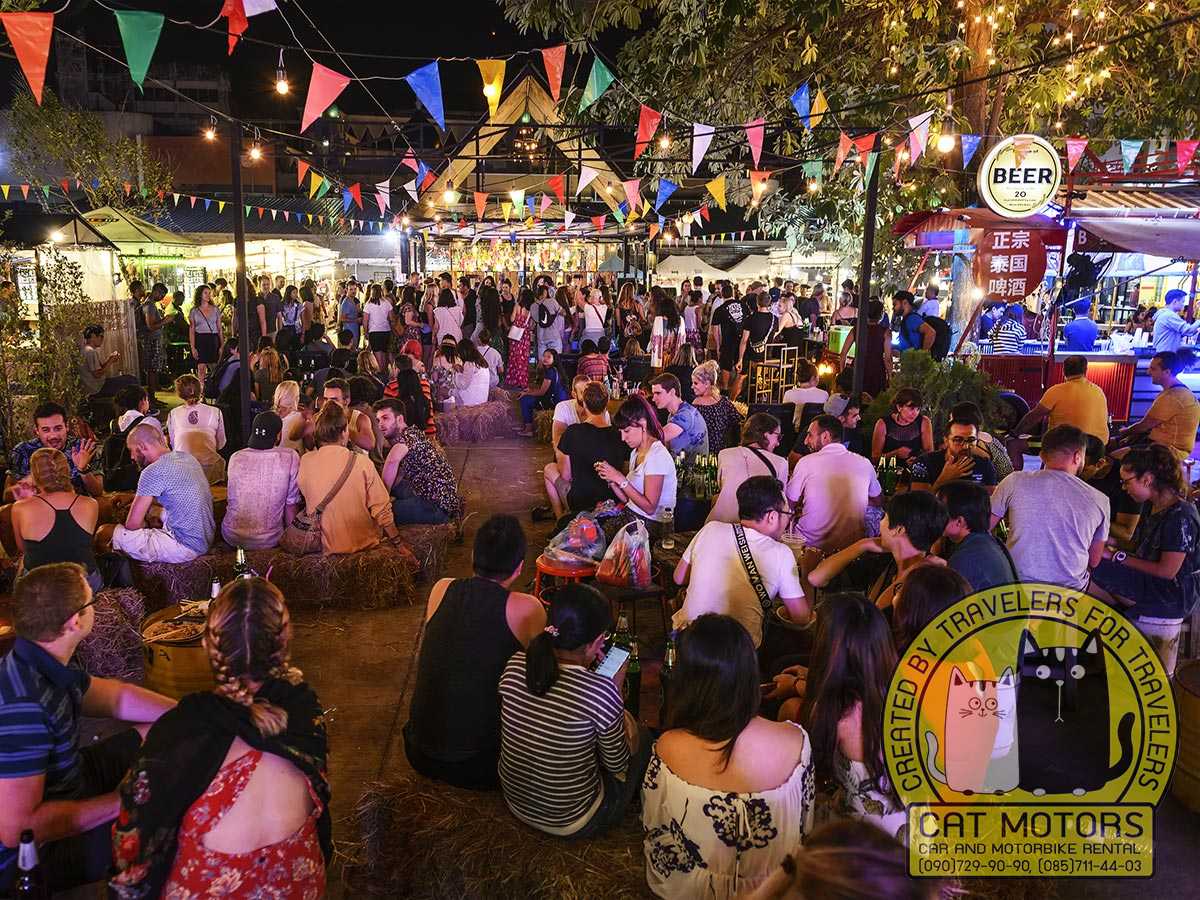
Ready for some insider tips? These are the kind of nuggets you pick up after spending weeks in Chiang Mai – the lesser-known spots, the little hacks, and the cultural quirks that can make your trip even more special:
- Sunrise Alms Giving: Wake up early one morning (around 6am) and take a walk near any temple or along residential lanes. You’ll witness local Buddhist devotees giving alms to monks. Monks walk in single-file in their saffron robes, carrying alms bowls, and locals place rice and food offerings into them. It’s a quiet, beautiful ritual. If you want to participate, ask your hotel how to do so respectfully – typically you’d prepare some fresh food (many markets sell alms sets in the morning), dress modestly, remove shoes, and gently place your offering in the monk’s bowl, then receive a blessing. Even just observing, please do so respectfully from a distance (and avoid getting in monks’ faces with a camera). It’s a serene way to see a slice of authentic culture as the city wakes up.
- Monk Chat at Wat Chedi Luang: As mentioned earlier, Wat Chedi Luang hosts informal monk chats daily in the late afternoon. This is a chance to talk one-on-one with young monks. It’s a free activity and the monks are very friendly – ask them about meditation, what time they wake up (hint: it’s super early), or how they feel about smartphones and modern life. You’ll walk away with new perspectives, and the monks get to practice English. Win-win!
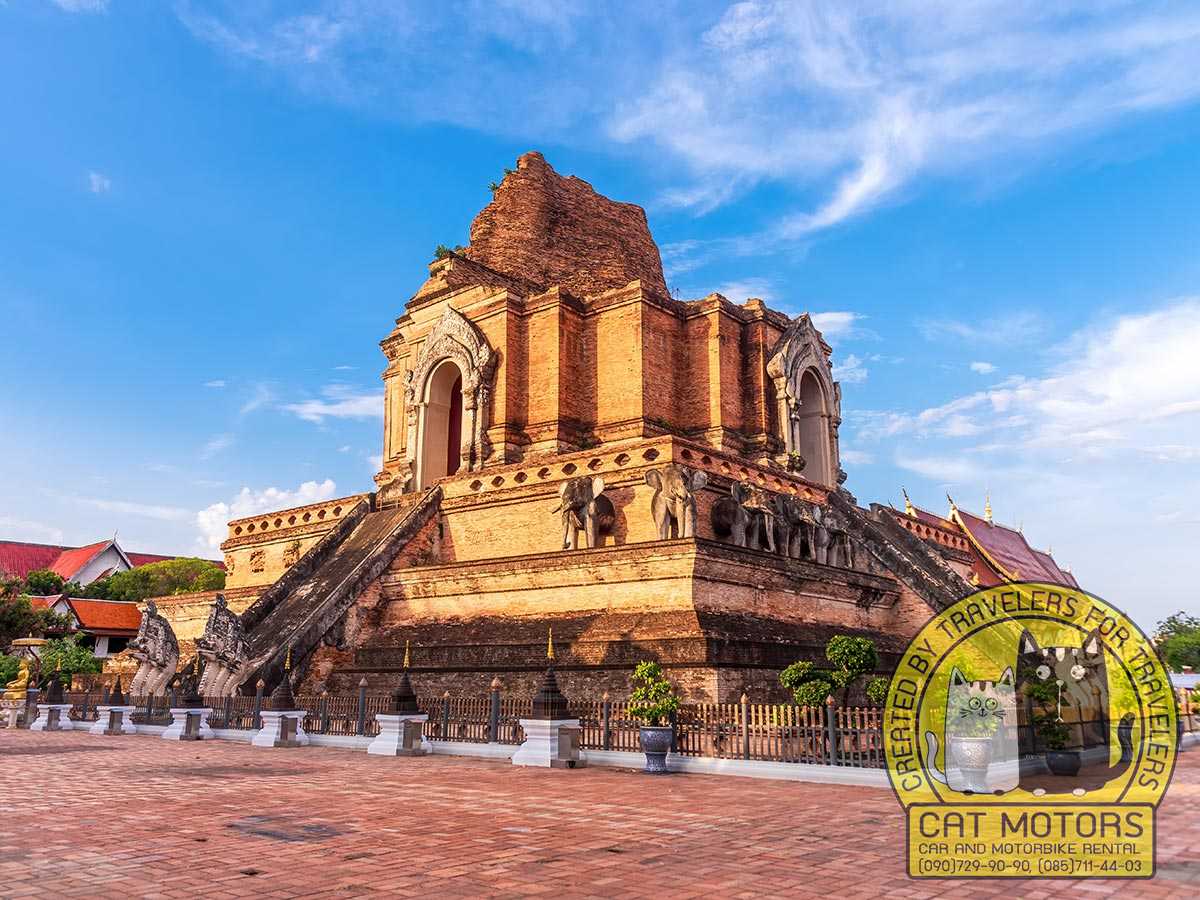
- Secret Temple Escape: Need a break from the crowds? Head to Wat Umong, the forest temple about 15 minutes outside the city center (you can Grab or tuk-tuk there). This 14th-century temple is unique for its system of underground tunnels built into a grassy mound. Inside the candle-lit tunnels you’ll find Buddha statues and maybe a bat or two fluttering about – it’s mysterious and quiet. Above ground, the temple grounds are lush and dotted with broken Buddha images (giving it a slightly Indiana Jones feel). There’s a large pond where you can feed the fish and turtles (bags of fish food are sold for a few baht – fun for kids and adults alike). Wat Umong is rarely busy and feels very spiritual and peaceful. It’s a lovely spot to meditate or just sit under the trees. Bonus: nearby is Wat Suan Dok, another temple worth a visit, known for its gleaming white mausoleums holding past Lanna kings’ ashes and a Monk Chat program of its own.
- Sticky Waterfall (Bua Thong): For a truly offbeat adventure, take a trip to the Sticky Waterfalls about 1 hour north of Chiang Mai. Known locally as Bua Thong, this multi-tiered waterfall is special because the mineral deposits on the rocks make them grippy, not slippery. You can literally climb up the waterfall with your bare feet – the rocks feel like a limestone sponge and you won’t slip! Ropes are there to help in steeper parts, but it’s surprisingly easy to clamber up like Spider-man with water rushing over you. It’s an exhilarating and refreshing experience, and most tourists have never heard of it. Go on a weekday if possible when it’s nearly empty (on weekends some local families picnic there). There’s no public transport directly, so you’d need to rent a scooter or hire a taxi/songthaew for a half-day (arrange a pickup time). Bring swimwear or clothes you don’t mind getting wet, and maybe a picnic to enjoy after – there are tables at the top under the trees. Bua Thong is a little slice of natural fun that will make you feel like a kid again.
- Grand Canyon Water Park: Mentioned earlier, the Grand Canyon (in Hang Dong district) is a former quarry filled with emerald water, now turned into a water park. If you’re up for swimming and some inflatable obstacle course action, spend a hot afternoon here. They have zip lines, a blobsled (those giant inflatable things where one person jumps and launches another into the water), kayak and SUP rentals, and cliff jumping spots (the highest around 10m – thrill-seekers only!). There’s an entry fee and lifejackets are mandatory (provided). It’s a blast for groups of friends or families with teens. If that’s too much adrenaline, another quieter quarry section nearby offers just swimming and a chill café with views. Note: the water’s pretty deep, so good swimming skills are a plus or just stick to the provided gear.
- Mae Kampong Village: If you have a spare day and want to see a picturesque mountain village, consider a trip to Ban Mae Kampong. It’s about 50km east of Chiang Mai (1-1.5 hour drive). This tiny village is nestled in a valley surrounded by forest, known for its homestays and slow life. The air is cooler, and it’s famous for coffee and fermented tea leaf products. You can walk the one main road, sip local arabica coffee with a mountain view, visit a small waterfall, and even do Flight of the Gibbon zipline nearby if you wish. Staying a night in Mae Kampong is an option for a truly immersive peaceful experience (many Bangkokians go there to unplug). But even as a day trip, it offers a nice contrast to the city – a look at rural Thai life amid beautiful scenery.
- Nightlife Tips: While Chiang Mai isn’t a party city like Bangkok or Phuket, it does have a fun nightlife if you know where to look. For live music, check out North Gate Jazz Co-Op – every night talented local and expat musicians jam out jazz and blues; the place is small and spills onto the street, very casual and energetic (go early to get a spot). For a more modern club vibe, Zoe in Yellow and the surrounding bars in the Old City (at the end of Ratvithi Road) form a nightlife complex popular with backpackers and young crowd – lots of loud music and dancing. If you prefer a chill drink, the Riverside Bar (mentioned earlier) and Good View have riverside views and live bands (playing Thai and international hits). Craft beer aficionados will be happy to find a growing craft brew scene – try Beer Lab in Nimman or Craft Beer Factory. Oh, and for a quirky evening activity: catch a Muay Thai fight. Thapae Stadium and Kawila Stadium host regular Thai boxing nights where for an entrance fee you can watch several bouts. It’s both a sporting and cultural experience – the music, the ritual wai kru dance before each fight, and the local spectators shouting bets make it electrifying.
- Shopping for Art and Antiques: If you’re into art, Chiang Mai has many small galleries and a thriving scene of Thai and expat artists. On Nimmanhaemin Soi 1 and in the Old City you’ll find studios selling contemporary art, photography, and traditional Lanna-style paintings. Also, if you like antique or retro stuff, seek out the Saturday/Sunday morning market at Wat Gate area and the Thongbia Antique store – they have all sorts of vintage items, old movie posters, records, and odd collectibles. Even the Night Bazaar’s Galare Lane has a few shops selling old opium weights, tribal silver, and Buddha statues (just be sure you’re allowed to take any antiques or Buddha images out of the country; there are regulations for genuine antiques and culturally significant items).
- Environmental Tip: Chiang Mai has fallen in love with iced drinks served in plastic bags and straws – you’ll see this everywhere. Consider carrying a reusable water bottle and maybe your own shopping bag to reduce plastic waste. Drinking water is widely sold but also look for water refill vending machines (usually outside 7-Elevens or random corners) – you can fill a liter for just 1 baht into your bottle. Many cafes will refill your bottle with filtered water for free or a tiny charge if you ask. Also, say “Mai ow tung” (no bag) or “Mai ow lawd” (no straw) when buying things to politely decline single-use plastics.
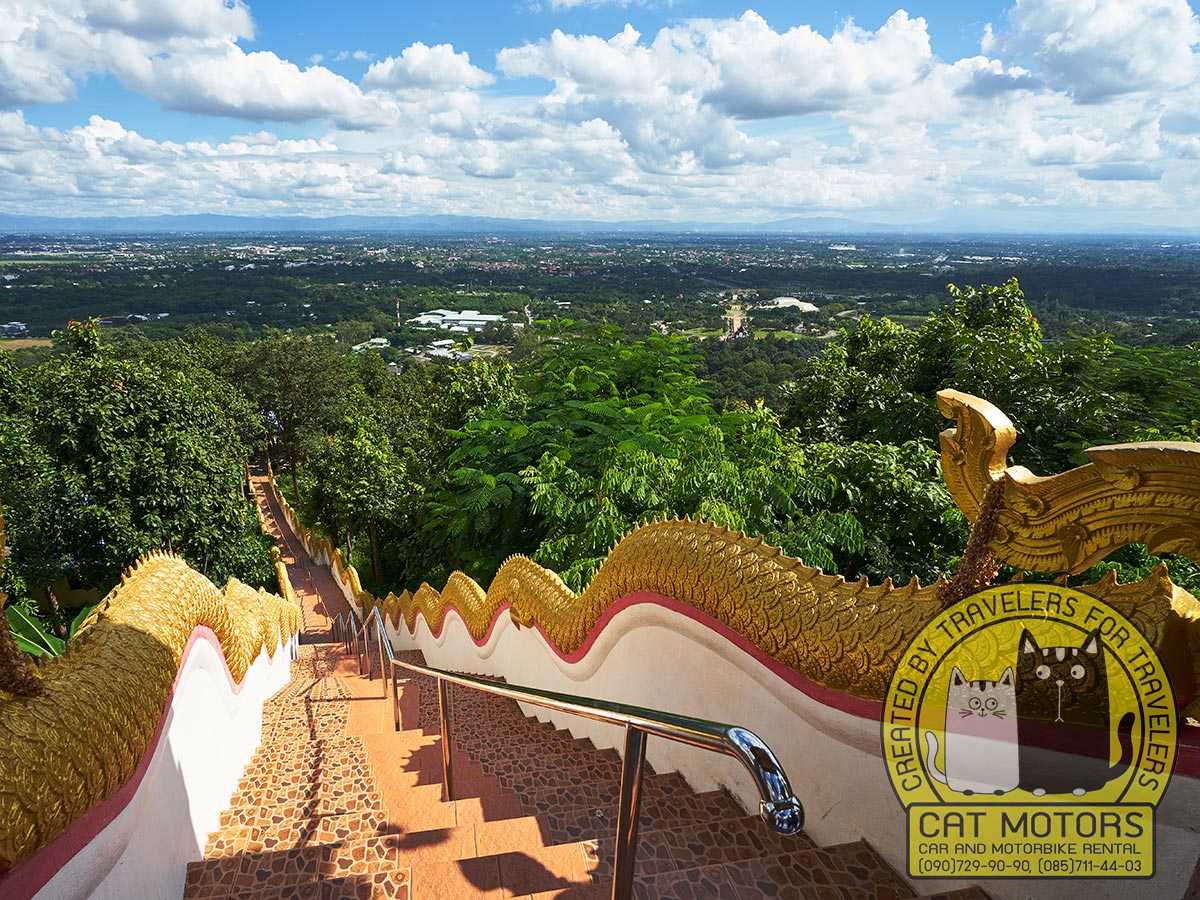
- Learn a Little Lanna: The local people in Chiang Mai have their own dialect (Northern Thai, or Kham Muang), which is different from Bangkok Thai – but everyone will understand standard Thai. It tickles locals when visitors use even a bit of Thai. Common words: “Sawasdee” (hello), “Khop kun kha/krab” (thank you), and “Aroy” (delicious). Up here, you might also hear “Sabai dee bor?” for how are you (instead of standard “Sabai dee mai?”). Don’t worry, English is spoken in all touristy places, but using Thai, even a simple “Kap khun jao” (Northern Thai for thank you, said by women; men say “Kap kun kap”) can earn you a big smile.
Chiang Mai is full of hidden gems and the best way to find them is talk to people – the locals are generally warm and proud of their city, and long-time expats have plenty of secret spots to share too. So strike up conversations at your guesthouse or a café. Who knows, you might get tipped off to a secluded hilltop temple with a great view, or a grandma selling the best curry in town down some alley. Embrace the spirit of discovery, and Chiang Mai will reward you with unforgettable experiences.
Cultural Etiquette and Customs
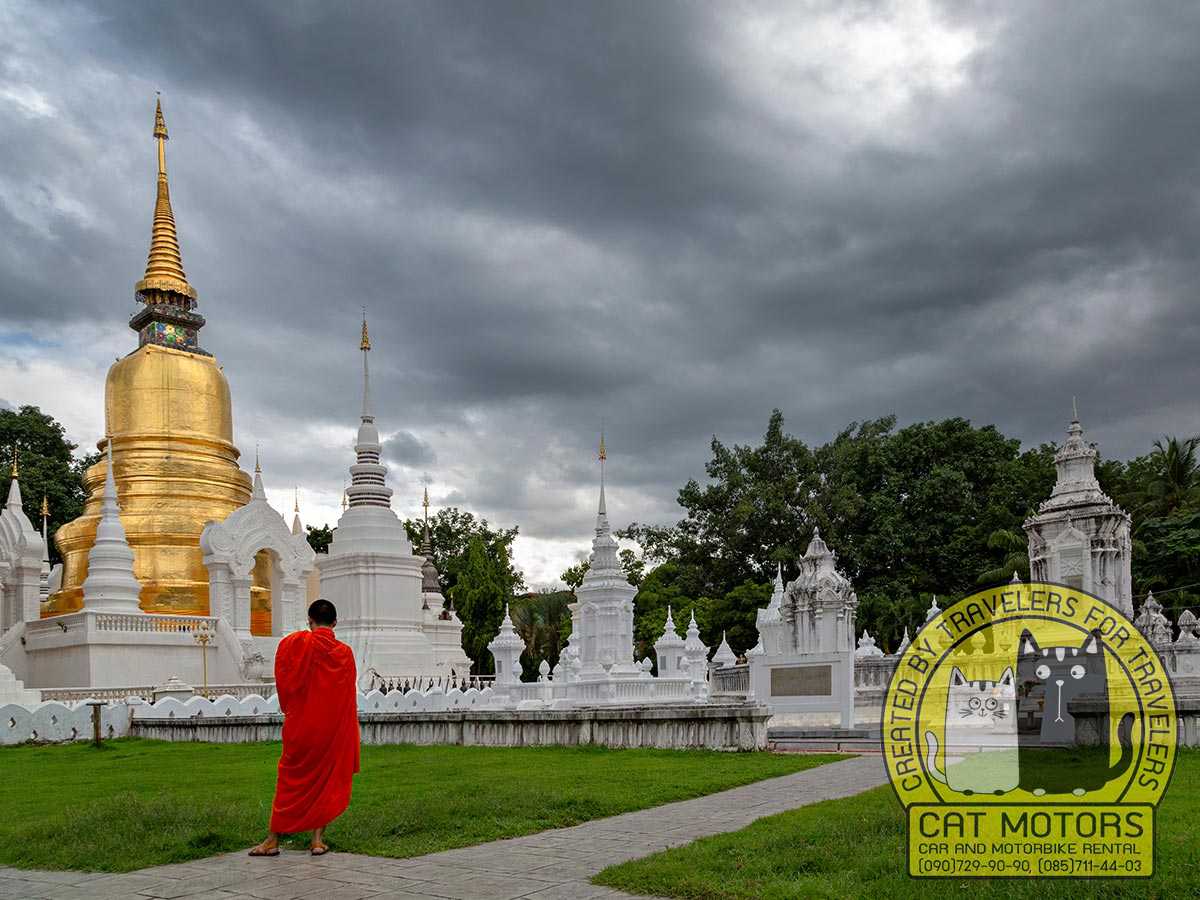
Thai culture is famously welcoming and forgiving to visitors, but it’s always good to understand local customs to show respect and avoid unintentional faux pas – especially in a place as traditional as Chiang Mai. Here are some cultural etiquette tips:
- The Wai Greeting: Thais greet each other with a wai – a prayer-like hands-together gesture with a slight bow of the head. In Chiang Mai, you’ll likely be wai’d by shopkeepers, hotel staff, maybe even strangers if you interact kindly. It’s polite to return it (though don’t worry, as a foreigner you’re not strictly expected to). The general rule: raise your hands with palms together (fingers pointing up) somewhere between chest and nose level. The higher the hands, the more respect (you’d wai a monk or elder with hands at nose level, a friend at chest level). A tip: if someone wais you, don’t leave them hanging – wai back with a smile. However, you don’t wai young children or service staff like waiters (a nod/smile is fine in those cases). And note that monks do not wai laypeople, so you wouldn’t wai back to a monk (you’d be the one wai’ing to show respect). It sounds complicated but just follow what locals do and you’ll be okay.
- Dress and Demeanor: As a predominantly Buddhist and conservative society, Thais appreciate modesty. In everyday tourist life, they won’t expect you to wear traditional clothes or anything, but be mindful of context. Temples – cover shoulders and knees, no cleavage or super tight outfits, and remove hats and sunglasses when entering temple grounds. Many temples in Chiang Mai provide shawls or sarongs for free or a small deposit if you forget. When sitting in a temple, avoid pointing your feet at any Buddha statue (sit cross-legged or tuck feet to the side). In general, avoid pointing your feet at people or touching anyone with your feet – the feet are considered the lowest/dirtiest part of the body, while the head is sacred. So conversely, never touch someone’s head (even a cute kid’s) – it could be seen as disrespectful. Also, you might see locals slightly bow their head when passing in front of someone or apologize if their feet happen to point at someone; don’t worry as a visitor, but just be aware of the feet thing.
- The Royal Family and Buddha Images: Thais deeply revere their royal family and the Buddha. You’ll see pictures of the King in shops and homes. It’s important not to say anything disrespectful about the monarchy – not only is it culturally offensive, it’s actually illegal (Thailand has strict lese-majeste laws). As a visitor, just observe and respect this sentiment. For Buddha images, never climb on or deface a Buddha statue (obviously), and try not to place yourself higher than a Buddha image (for example, if taking a photo, don’t pose above a Buddha statue or sit on the statue’s pedestal). It’s also considered inappropriate to get a Buddha tattoo or wear Buddha jewelry as fashion – locals might find that offensive. Basically, treat religious and royal symbols with a lot of respect.
- Saving Face and Sanuk: Thai culture highly values being polite, calm, and not confrontational. Raising your voice, showing anger, or criticizing someone openly is frowned upon (people will think it’s silly or rude). Try to keep your cool even if things go wrong – a smile and patience will solve most issues. If you have a problem (say, at a hotel or store), speak softly and calmly and you’ll find Thais extremely helpful to resolve it. The concept of “sanuk” means having fun – Thais like things to have a fun, light-hearted element. So jokes, laughter, and a relaxed attitude are always welcome. You might notice people giggling at minor mishaps rather than getting annoyed; it’s that mai pen rai (never mind) attitude. It’s infectious in a good way.
- Touching and Affection: Aside from the head (don’t touch) and feet (don’t point), just remember that Thais are generally not touchy with strangers. A friendly handshake is okay if someone offers (many Thais might opt for the wai instead of a handshake). Public displays of affection between couples are modest – you’ll rarely see local couples kissing or hugging big time in public. Holding hands is fine; anything more passionate, best save for private moments. On the other hand, you might see friends of the same sex being very affectionate (girls holding hands, guys with arms over shoulders) – that’s common and just friendship. If you’re LGBTQ, you’ll find Chiang Mai fairly accepting, but apply the same general public decorum as above.
- Dining Etiquette: Eating in Thailand is usually casual and communal. In Chiang Mai’s casual eateries, you might get a fork and spoon (Thais eat most dishes with these, using the fork to push food onto the spoon; chopsticks are usually only for noodle soups). It’s polite to wait for everyone’s dish to arrive before starting, especially in a Thai family or group context. Often dishes are shared and everyone takes a bit onto their own rice plate. If you’re pouring a drink for yourself, it’s polite to also pour for others (especially older people) – and they’ll do the same for you. Thais appreciate if you try using a few local words: “Aroy mak!” (very delicious) to compliment the cook, or “Im lai-o” (I’m full) when you’ve had enough. In Chiang Mai, there is a custom of khan tok dining (as mentioned, sitting on floor mats) – just be flexible sitting on the floor; pointing your feet at others in that posture is what to avoid.
- Paying Respect: You might notice in some shops or homes, little spirit houses or altars with offerings. Don’t touch these. If you happen to be around during daily rituals (like someone lighting incense or leaving offerings), just give them space. Also, if you visit someone’s home or a small guesthouse, it’s customary to take off your shoes before entering indoors. If you see a pile of shoes at the door, that’s the cue. When visiting hill tribe villages on treks, your guide will usually brief you on any specific customs (for example, some tribes might have a ‘spirit gate’ where women aren’t allowed in certain areas – but on standard tours these things are handled and not an issue).
- Language and Communication: The Northern Thai people are known to be extra warm and a bit shy. A little Thai language goes a long way to break the ice. Always add “kha” (if you’re female) or “krub” (if male) at the end of sentences for politeness. So, “Hello” is “Sawasdee kha” (women) or “Sawasdee krub” (men). “Thank you” is “Khop kun kha/krub.” You’ll probably get a delighted response or at least an appreciative smile for trying. If someone gives you a compliment or a gift, a nice response is a wai and “Khop kun kha/krub”. And if you accidentally offend or bump into someone, a wai and “Khor toht” (sorry) helps maintain the harmony.
- Tipping: Tipping isn’t huge in Thai culture as it is in some Western countries, but in tourist areas it’s become common to leave small tips. In Chiang Mai, at simple eateries or street stalls you don’t tip – people might even chase you thinking you forgot change. But at nicer restaurants or for services like massages, a tip of 10-50 baht is appreciated if you were happy. For hotel staff like porters or tour guides, feel free to tip a bit (like 50-100 baht or more, depending on service). It’s not obligatory, but it is a nice way to show gratitude if someone went above and beyond.
- Negotiating: Bargaining at markets is normal, but keep it light-hearted. The first price given by a vendor might be higher expecting you’ll bargain. Counter with a smile and a lower number. If you do a little back-and-forth and settle on a price, it’s good form to then buy it. If you decide not to, just wai slightly and say “Mai pen rai” or “maybe later.” Thais often avoid flat ‘no’s – they use phrases like “maybe next time.” So if a tuk-tuk offers a price you don’t want, you can smile and say “Oh, expensive. Mai ao na kha (I don’t want).” and walk on. No need to get angry about the foreigner pricing; just negotiate or decline politely.
In general, respect, calm, and a smile are your tickets to being welcomed everywhere in Chiang Mai. Locals truly appreciate visitors who show interest in their culture. You’ll likely find that if you make an effort to be culturally sensitive, you’ll be treated like an honored guest. Thai hospitality is real – people might invite you to join a local festival, or a vendor might throw in an extra fruit just to make you happy. Treat those moments with gratitude and you’ll create cross-cultural friendships that are incredibly rewarding.
Visual and Sensory Experience
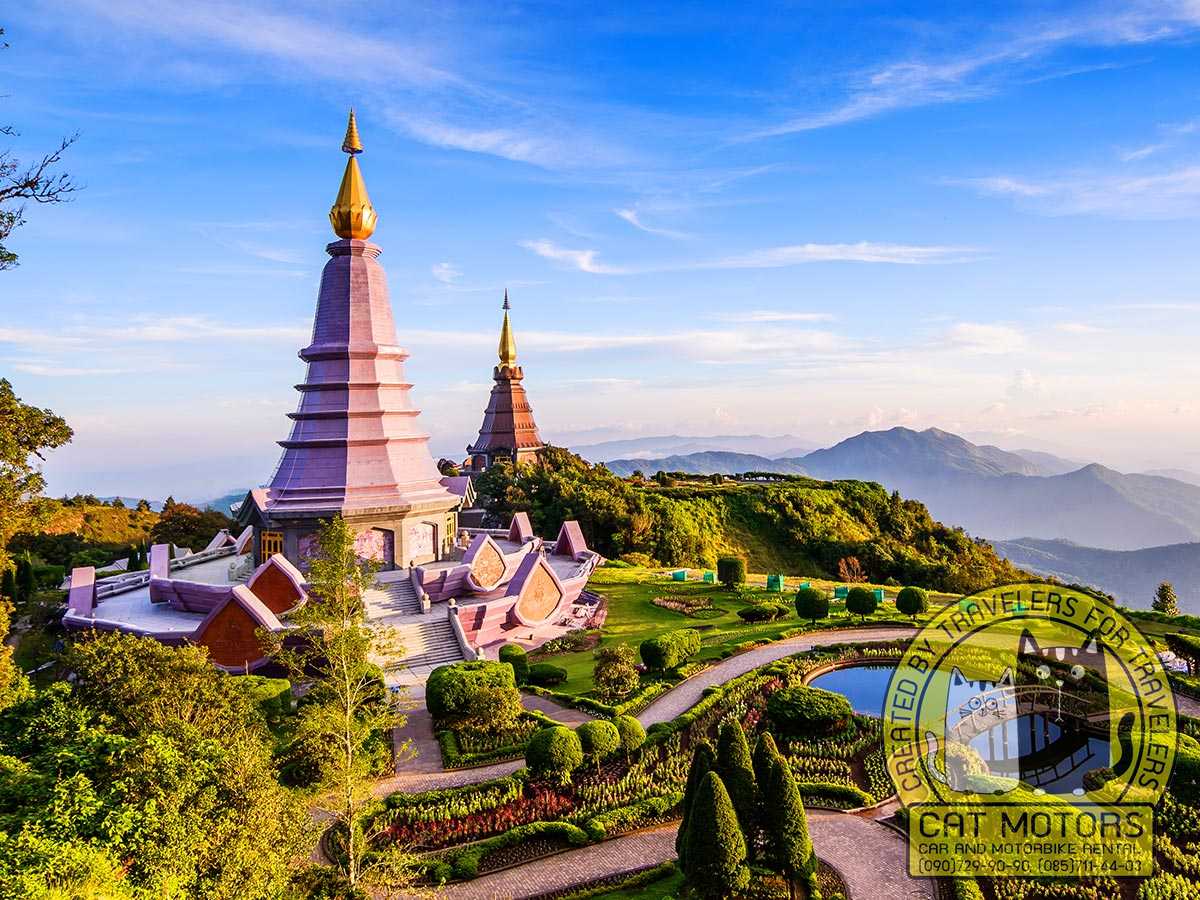
Close your eyes and imagine Chiang Mai – what do you feel? Perhaps the warmth of the tropical sun tempered by a cool mountain breeze. What do you hear? The soft gong of a temple bell at dawn, the fluttering of prayer flags, the laughter of children splashing in the moat during a festival. How about the smells? Fragrant jasmine incense wafting out of a shrine, the mouthwatering aroma of garlic and chilies being tossed in a hot wok at a street stall, the earthy scent of rain hitting soil in a lush garden. And the sights – oh, the sights! Chiang Mai is a canvas of rich images that stay with you long after you leave.
Picture yourself standing at Tha Phae Gate at twilight. The ancient brick gate glows orange as the sun dips, and the moat’s waters reflect the neon of nearby food stalls setting up for the night. A pair of young monks in vibrant orange robes walks by, giggling about something (monks have cellphones too these days!). You stroll into the Old City as lanterns begin to light up under the eaves of traditional wooden houses. There’s a quaint coffee cart on the corner, the barista waving hello – you grab a Thai iced tea in a plastic bag and continue.
Down a small soi (alley), you discover a golden chedi (stupa) unexpectedly tucked between shops. It’s Wat Phan Tao with its gorgeous teak wood hall; in its yard, lanterns hang from a Bodhi tree, maybe leftover from last night’s festival – they sway gently and cast a magical glow. It feels like you’ve stepped onto a movie set, yet it’s just a normal evening in Chiang Mai.
Next morning, you’re on the back of a red songthaew climbing the road up Doi Suthep. The city unfolds below you like a map – green rice fields, the Ping River snaking through, and the dense cluster of the Old City’s treetops and rooftops. At Doi Suthep temple, the sun hasn’t fully risen and there’s a hush. You hear the rhythmic chanting of monks inside the viharn (prayer hall) – a deep, calming hum that resonates in your chest. The air smells faintly of burning candles and lotus flowers left as offerings. As you emerge onto the terrace, the morning light hits the temple’s golden spire. It’s dazzling – the whole stupa seems to catch fire in the sun, shining brilliantly against a backdrop of clear blue sky. You take a moment to breathe it in: the beauty, the serenity, the slight chill in the mountain air. A few monks feed the temple dogs and ring the morning bell. From this vantage point, Chiang Mai below is still waking up, little puffs of smoke from breakfast fires rising here and there.
Back in the city, you decide to wander the markets. At Warorot, your eyes widen at the explosion of colors – pyramids of spices in red, yellow, and green; baskets overflowing with bright orange mandarins and shiny purple eggplants; racks of hill-tribe jackets with bold geometric patterns in pink and blue. Vendors beckon you to try a taste: a slice of sweet jackfruit, a crispy pork rind, a sip of herb juice. It’s an endless tasting menu for the senses. There’s a friendly chaos – ladies in wide-brim hats rapidly chopping vegetables, an old man snoozing next to his display of Buddha amulets, a teenager deftly flipping banana pancakes on a hot griddle, sending sweet banana aroma into the air. You feel a little lost and totally alive at the same time.
In the late afternoon, you find yourself by the Ping River. Perhaps you’re in a quiet café garden, sipping locally grown coffee as the shadows lengthen. The river flows lazily. A fisherman on a long-tail boat casts his net, and you see water hyacinths drifting on the surface. There’s a gentle clink of china from the cafe as someone serves tea at the next table. Time feels slower here – you relish that famous Chiang Mai laid-back vibe.
As dusk falls, you join the throngs at the Sunday Walking Street. The energy is completely different now – upbeat, celebratory. The city is one big open-air party of sights and sounds. A street performer strums an acoustic guitar and sings a Thai ballad; further down, a traditional Lanna dance is being performed by girls in silk, their hands moving in elegant arcs. Your ears pick up a hundred sounds at once – bargaining chatter in Thai, laughter as a tourist tries a chili and finds it spicy, the sizzle of meat hitting a hot grill, the clink of ice being shaken in a cocktail shaker at a pop-up bar stand. You nibble on a skewer of grilled chicken satay, its smoky flavor balanced with creamy peanut sauce, while browsing a stall of hand-dyed indigo fabrics under a bare bulb. The vendor’s cat is curled up on the pile of cushions for sale – classic Thailand, you think, chuckling.
Overhead, the sky is ink-black and clear. If it’s November, maybe you catch sight of a paper lantern floating upwards – a khom loi drifting among the stars, carrying someone’s wish. Or if it’s February, you notice a flurry of flower petals on the street from the afternoon’s Flower Festival parade, and the faint perfume of blooms still lingers. The air is warm but not oppressive, and every so often a cool draft comes off the river or down from the mountains, reminding you that yes, you’re in the North, where the climate is kind.
On your last night, you treat yourself to a rooftop bar in Nimman. With a cocktail in hand (perhaps a lemongrass mojito), you gaze out at Chiang Mai’s skyline. It’s not a skyscraper kind of skyline, but rather a glittering spread of city lights punctuated by the dark outlines of mountains beyond. You can make out Doi Suthep’s golden stupa twinkling on the hill – a tiny beacon watching over the city. You reflect on your time here: the faces of the kind people who helped you, the flavors that danced on your tongue, the quiet moments of reflection and the lively bursts of adventure. Chiang Mai has a way of making you feel at home and enchanted all at once. It’s modern yet steeped in spirituality, energetic yet profoundly peaceful.
As you imagine all this, perhaps you realize Chiang Mai is not just a place you see – it’s a place you feel. It’s the cool tile of a temple floor under your bare feet, the tickle of an elephant’s trunk as it sniffs out bananas from your hand, the chorus of cicadas on a hot afternoon, the glitter of a thousand temple mosaics when you catch them at the right angle. It’s the gentle “Kap khun kha” from a vendor as she hands you change, the excitement of discovering a hidden alley mural, the contentment of a Thai massage easing your travel aches.
In Chiang Mai, every sense is invited to the party. By the end of your trip, you’re not just taking home photos, but a collection of sensory memories: the taste of that perfect bowl of Khao Soi, the sound of rain on tropical leaves, the sight of monks’ orange robes contrasting against a blue sky, the smell of frangipani flowers at your guesthouse, and the touch of a hand-woven scarf you bargained for at the market. These memories will call you back to Chiang Mai time and again, like a beloved story you want to reread.
So pack your bags with an open mind and an eager heart. The enchanting Rose of the North is ready to share all its colors, flavors, and smiles with you – an experience as informative as it is inspiring. Safe travels (or as they say in Thai, “Dee dern thang”) and enjoy every moment in marvelous Chiang Mai!
Video Review
FAQ
The best time to visit Chiang Mai is from November to February when the weather is cool and dry.
Top attractions include Wat Phra That Doi Suthep, Wat Chedi Luang, Wat Phra Singh, the Sunday Walking Street, and the Chiang Mai Night Bazaar.
Try khao soi, sai ua (northern Thai sausage), nam prik noom (green chili dip), and gaeng hanglay (pork curry).
Tuk-tuks, songthaews (red trucks), taxis, and rented bicycles or scooters are the most convenient ways to get around Chiang Mai.
Plan for at least 3-5 days to explore the main attractions and experience the local culture.
Popular day trips include visiting the Elephant Nature Park, Doi Inthanon National Park, and the Chiang Dao Caves.
Yes, many people in Chiang Mai speak English, especially those in the tourism industry, and you can find English-speaking guides for tours and attractions.
The Old City, Nimman, and the Night Bazaar area are popular areas for tourists to stay.
Key events include the Chiang Mai Flower Festival in February, Songkran in April, and Loy Krathong (Yi Peng) in November.
Chiang Mai is generally safe for tourists, but as with any destination, use common sense and avoid poorly lit or isolated areas at night.
The Thai Baht (THB) is the currency used in Chiang Mai. You can exchange money at banks, currency exchange counters, and some hotels.
Free Wi-Fi is widely available at cafes, restaurants, and hotels throughout Chiang Mai.
The Sunday Walking Street, Warorot Market, and Wualai Walking Street are popular local markets.
Yes, Chiang Mai has numerous vegetarian and vegan-friendly restaurants and food stalls.
Scooters and bicycles can be rented from various rental shops. For scooters, you’ll need a valid driver’s license and passport, while bicycles typically require a deposit. Check our rates for scooter rentals in Chiang Mai.
Dress modestly, remove shoes before entering temples or private homes, avoid touching people’s heads, and use the “wai” gesture to show respect.
Yes, there are many cooking schools in Chiang Mai offering hands-on classes, often including market tours and lessons on traditional Thai ingredients.
There are several volunteer opportunities in Chiang Mai, including teaching English, working with NGOs, and participating in environmental or animal welfare projects.
You can travel to Chiang Mai by plane, train, or bus from major cities like Bangkok, Phuket, and Pattaya.
Chiang Mai has numerous massage parlors and spas offering traditional Thai massage. Prices vary, but you can generally find affordable, high-quality services throughout the city.
Taxis, ride-hailing services like Grab, and airport shuttle services are available for transport from Chiang Mai International Airport to your accommodation.
Taxis and ride-hailing services like Grab are available in Chiang Mai, providing reliable transportation options.
Yes, you can find English-language books at bookstores like Suriwong Book Centre and some convenience stores or supermarkets. English newspapers and magazines are also available at these locations.
Popular nightlife areas include Nimmanhaemin Road, Loi Kroh Road, and the area around Tha Pae Gate. Chiang Mai also has live music venues, bars, and nightclubs.
Local SIM cards can be purchased at the airport, convenience stores, or mobile phone shops. Major providers include AIS, DTAC, and TrueMove. You’ll need your passport to register.
Tipping is not obligatory, but appreciated for good service. You can tip 20-40 baht at restaurants or round up the bill, give small tips to hotel staff, and tip taxi drivers by rounding up the fare. A tip of 50-100 baht in Thailand is a very good tip, in all places without exception, even in five-star hotels.
Yes, Chiang Mai has several hospitals and clinics with English-speaking staff, such as Chiang Mai Ram Hospital and Lanna Hospital, which cater to tourists.
Thai silk, handmade jewelry, hill tribe handicrafts, carved wooden items, and local snacks are popular souvenirs from Chiang Mai.
Yes, several language schools in Chiang Mai offer short-term Thai language courses, such as Walen School, Pro Language, and Effective Thai.
Public transportation options include songthaews (red trucks), tuk-tuks, and some bus routes like the RTC Chiang Mai Smart Bus.
Credit cards are accepted in many hotels, restaurants, and larger shops, but it’s a good idea to carry cash for smaller establishments, street vendors, and local markets.
It’s generally recommended to avoid tap water and drink bottled or filtered water during your stay in Chiang Mai.
Look for language exchange meet-ups, expat groups, or events on websites like Couchsurfing and Meetup, where you can interact with locals and other travelers.
Dress modestly when visiting temples or religious sites. Cover your shoulders and knees, and remove shoes before entering temple buildings.
Check local event listings on websites like Chiang Mai Citylife, local newspapers, or ask your hotel reception for information on upcoming events and activities.
Some popular cafes include Ristr8to, Akha Ama Coffee, and Graph Cafe, where you can enjoy local Thai coffee and a cozy atmosphere.
Discover Northern Thailand’s beauty and culture through our comprehensive travel guides, featuring the best scenic routes and attractions. For a seamless start, visit our scooter rental in Chiang Mai home page. Make sure to check our terms and conditions for all the details you need. Armed with this information, you’ll be ready to explore lush landscapes and cultural landmarks. Enjoy the adventure of navigating through Northern Thailand’s diverse and stunning terrains.
Additionally, make sure to visit our tips and advice sections, where you’ll find essential recommendations for safe riding. Our website is packed with valuable information to help you make the most of your motorbike adventure. By utilizing these resources, you can ensure a well-planned, memorable trip that captures the true essence of Northern Thailand’s natural and cultural treasures.
If you find inaccuracies in the text or want to add interesting information for our readers, feel free to message us.
Cat Motors Team
- Author: Krit Sorenser
- Updated: January 4, 2026
- No Comments




